Intro:
She’s finally here! the Tamron 18-300mm f3.5-6.3 Di III – A VC VXD FX.
It was pre ordered on 5/10/2021, and delivered on 17/02/2020 – four months an a half ! I have never had to wait this long for a lens.
In the meantime I have been using and testing it thoroughly – more importantly, I have been able to compare it well next to my two Fuji XF 18-135 & 70-300mm lenses.
Is it as good as claimed on commercial websites?
Can she replace two Fujifilm lenses with one lens?
Is this the only lens you will ever need?
Well, before we get there, let’s unpack the lens.
The rest will then follow automatically.
The unboxing:
The lens came in a white sturdy cardboard box.
In the box, the lens was packed in a kind of paper bag, between two cardboard lens holders.
A quick guide in (many) languages on a large paper sheet printed on both sides.
Also a smaller yellow colored pamphlet with precautions for safe use.
So actually packaged fairly environmentally friendly, and no waste of trees on encyclopedia thick manuals in 1001 languages.
There is a red sticker on the box that indicates that you can register for a 5-year warranty online.
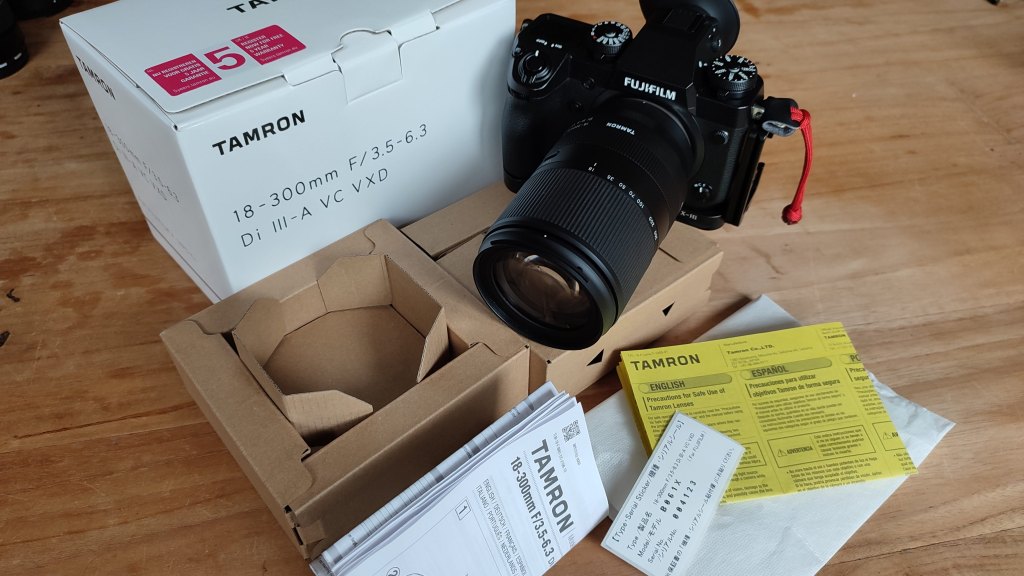
And here I have to mention a small problem.
The box states a 5 year warranty after registration at 5years.tamron.eu
And this was the first thing I was going to do.
The website stated that I needed a sticker code that would be on the warranty card,
however, there was no warranty card in the box, and in the form on Tamron’s website, Fujifilm wasn’t even in the dropdown list of the camera body you had to specify what the lens was for.
Now, in retrospect, something was mentioned about the warranty card on an earlier page of Tamron, apparently not in all countries, maybe even dealer dependent, a warranty card is included.
The registration for the 5-year warranty must then be done through the dealer.
So something to keep in mind.
How the lens felt:
I started comparing it with my two Fujifilm lenses, namely the XF 18-135mm and XF 70-300mm.
The outside of the lens feels more “plastic” than the Fuji FX lenses – if you tap the lens with your fingernail, you’ll hear the difference to. The plastic of the Fujifilm lenses almost looks like metal (aluminium), while the Tamron’s plastic feels much more fragile.
The lens is quite smooth with no buttons or switches except for one, the lens block button.
It is a pity that there is no manual control of the aperture on the lens. This is of course possible on the camera with one of the command dials, but with Fujifilm I like that everything is also operable as with an analog camera, so I do miss the manual control of the aperture on the lens.
The rubber ring of the zoom gives a very good grip, which is good, because the lens does have some resistance when zooming in/out – as far as it is now i think the button to block the lens from extending is unnecessary.
The rubber ring for manual focus is slightly smaller than the one on the Fuji FX lens – I have not tested manual focus yet.
The weight of the lens is just a few grams higher than the FX 70-300mm, but still not too heavy to walk around all day, you have to keep in mind that this will probably be the only lens you have with you, in almost all conditions – if she performs well that would be great!
The lens fits well in hand, both for people with smaller or larger hands.
Weight compared to its Fujifilm counterparts: (left XF70-300-middle Tamron 18-300-right XF18-135)
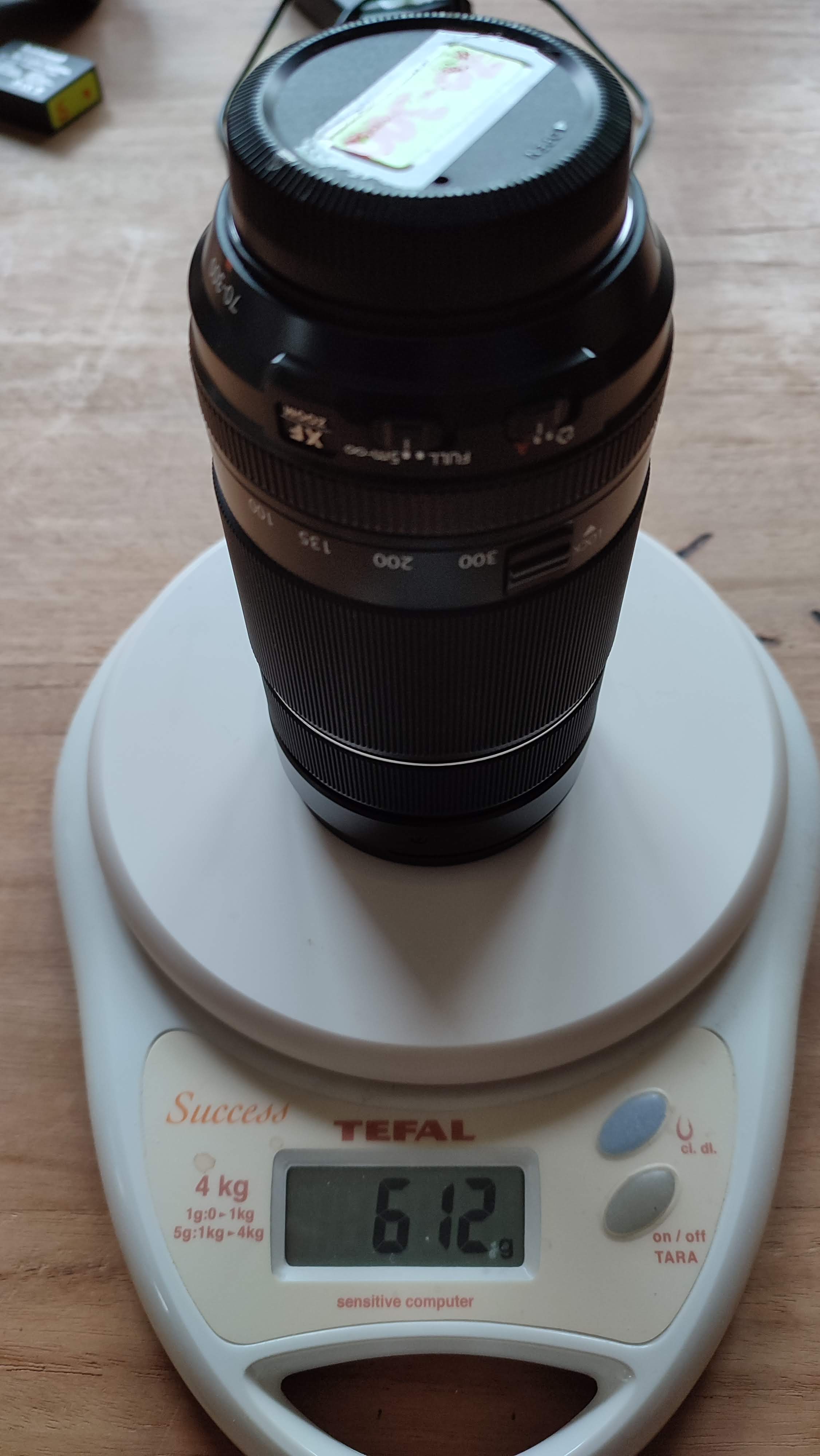
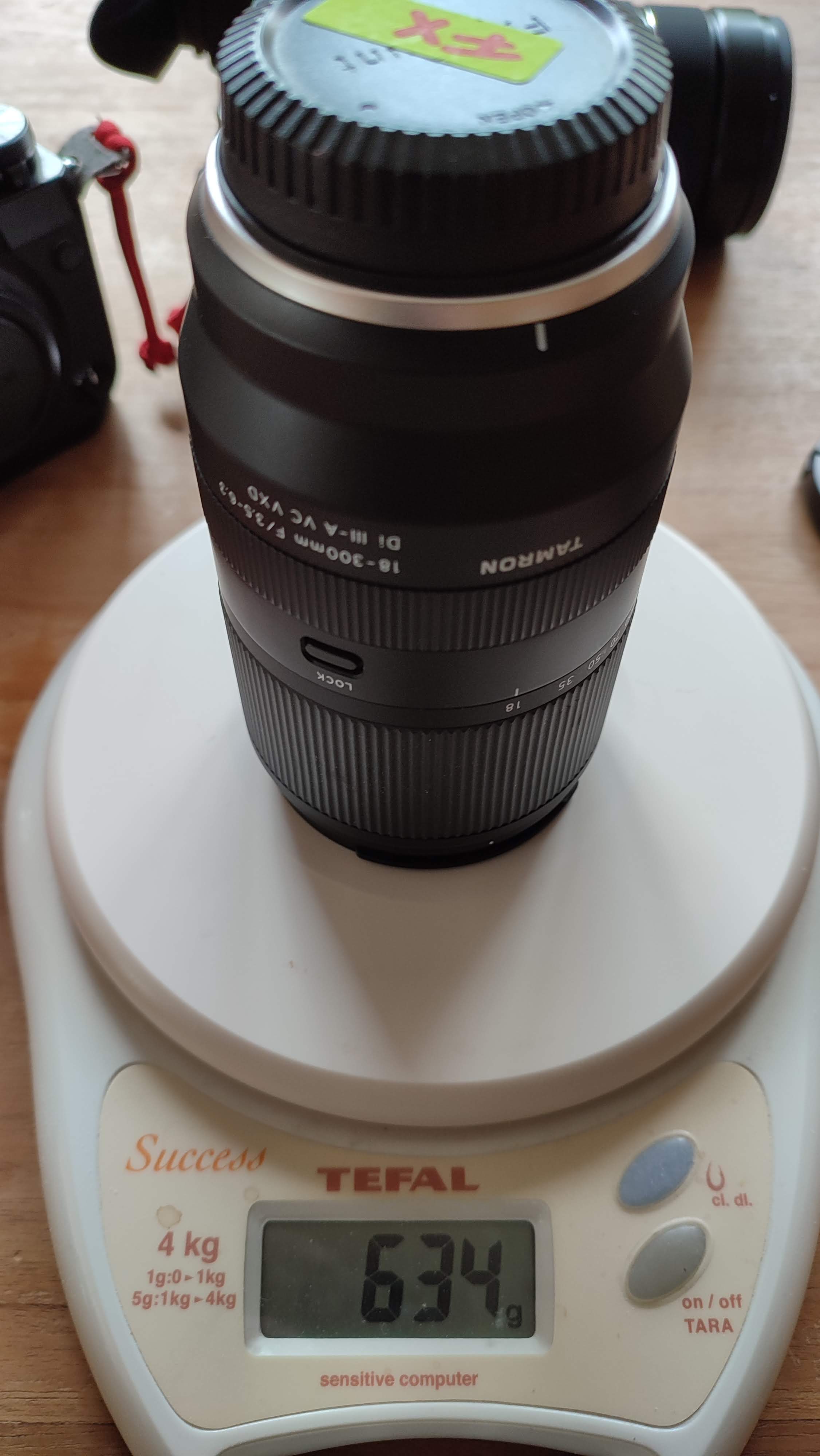
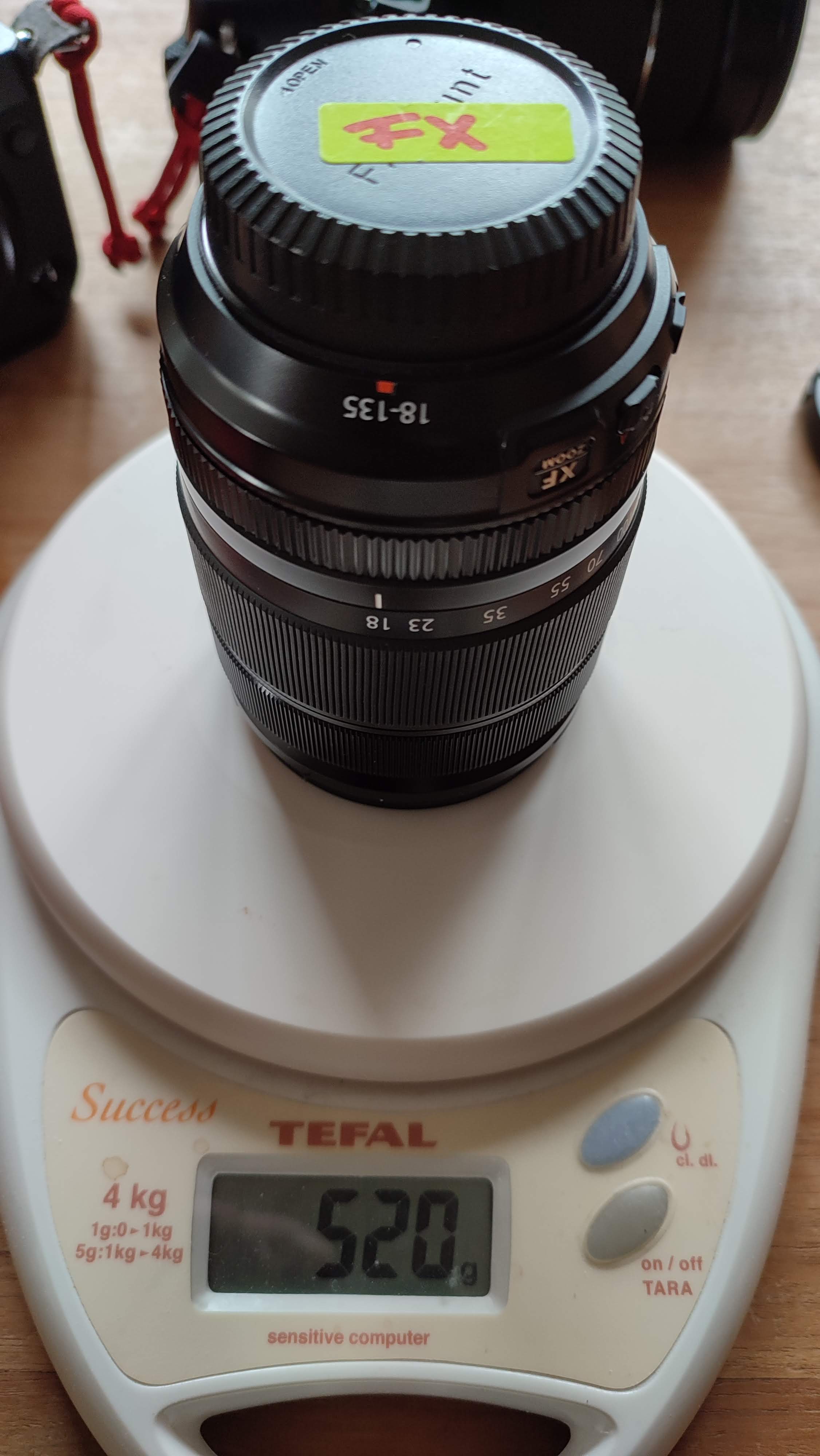
Size compared to its Fujifilm counterparts:
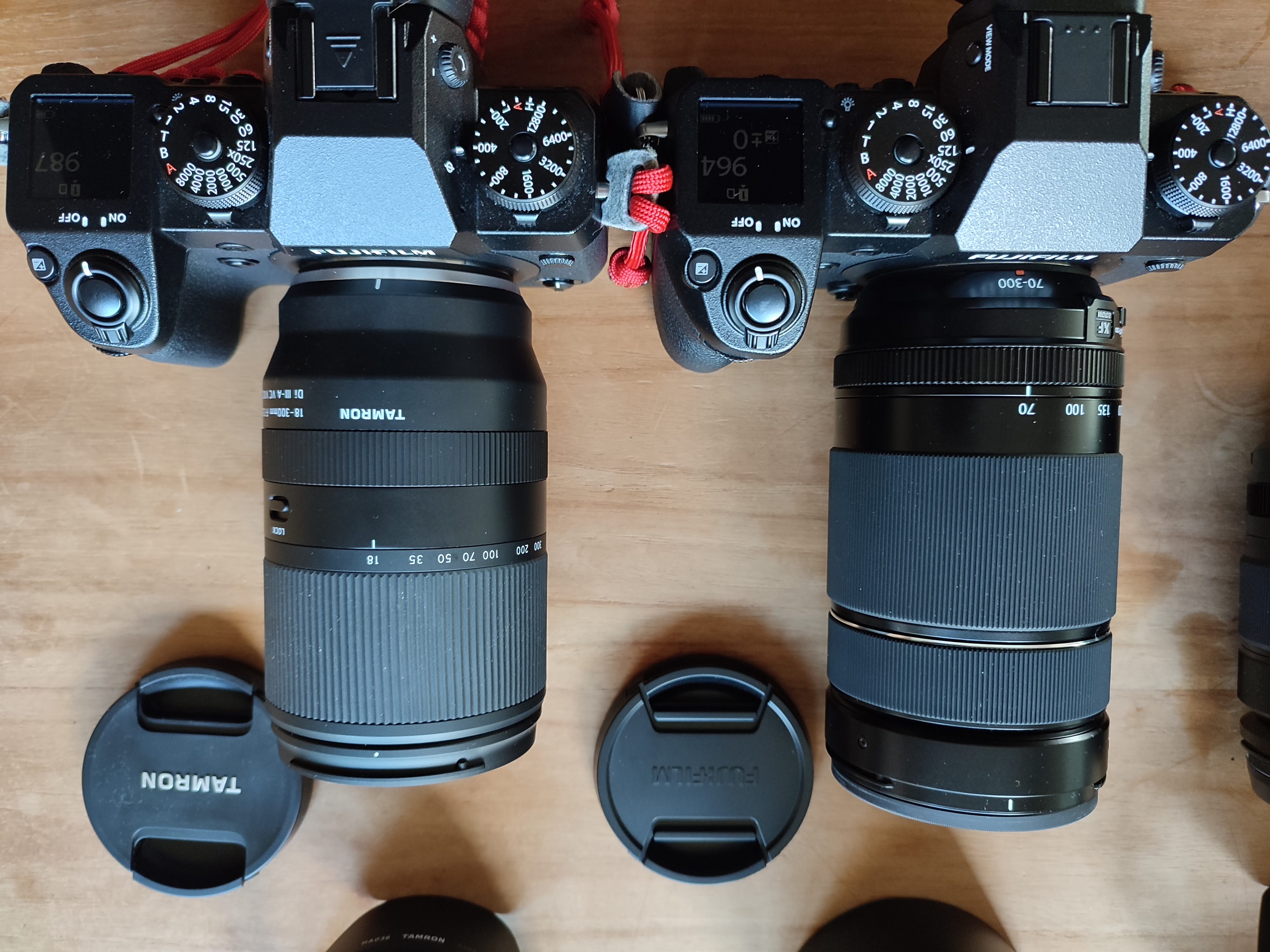
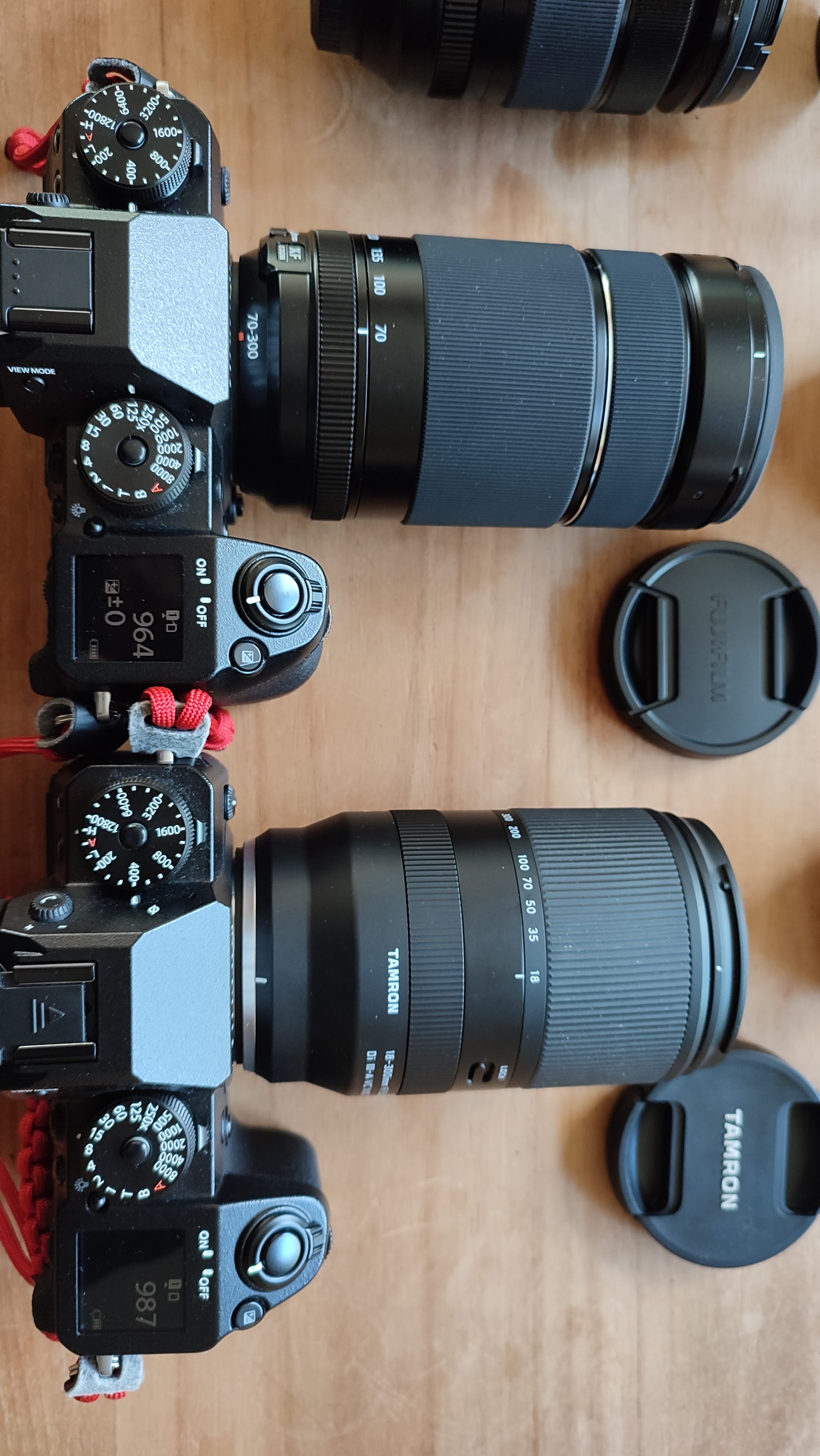
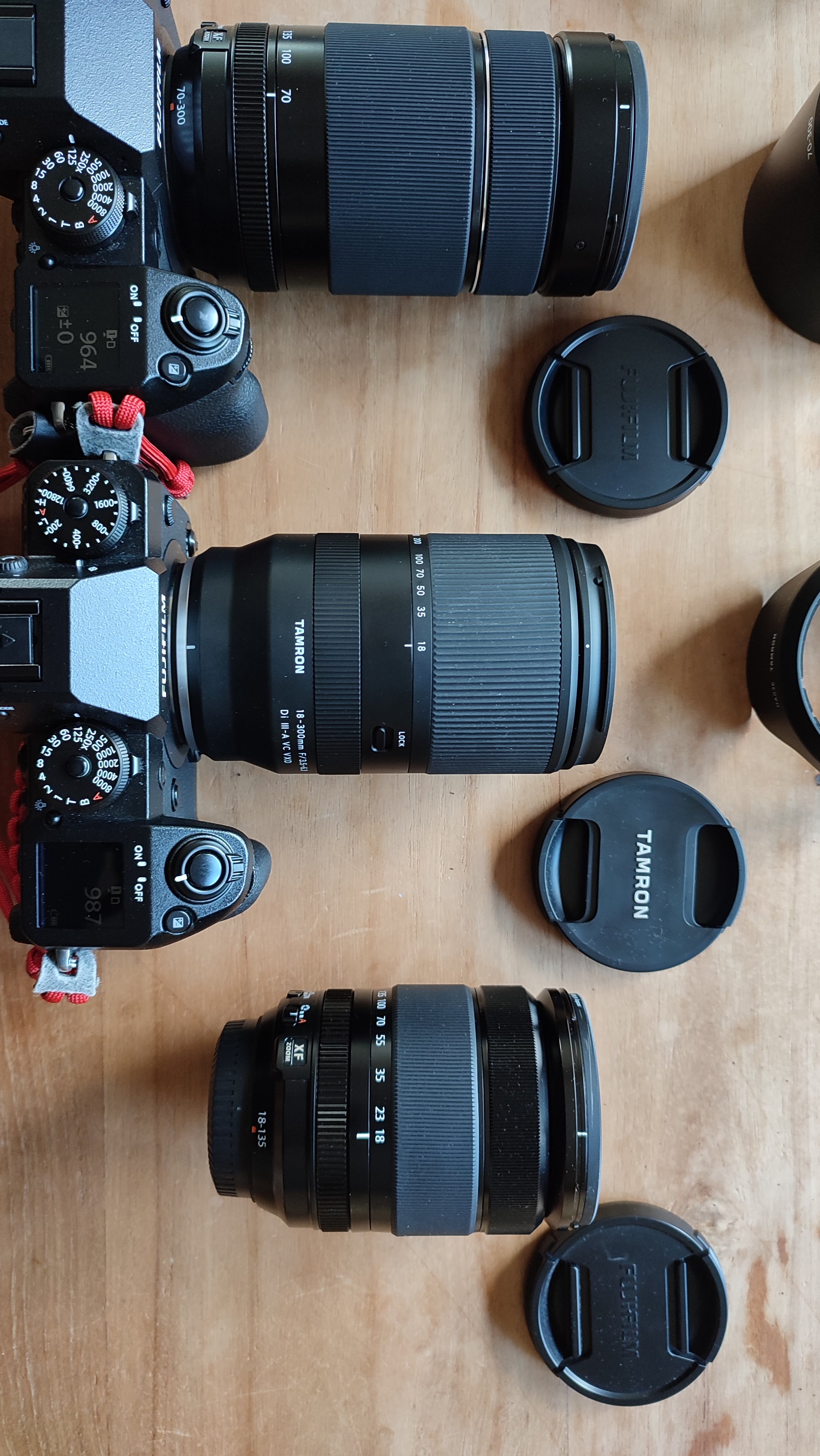
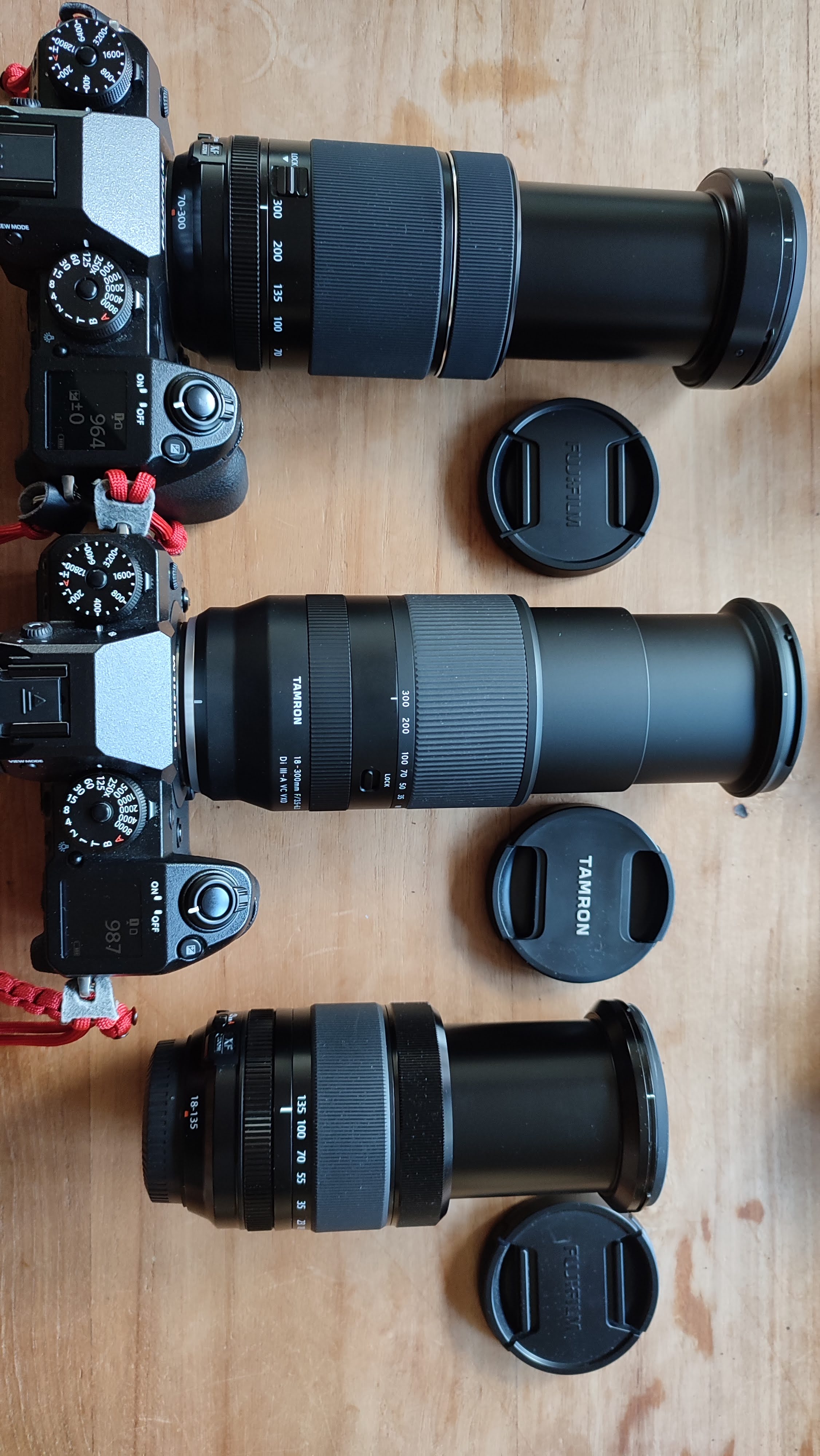
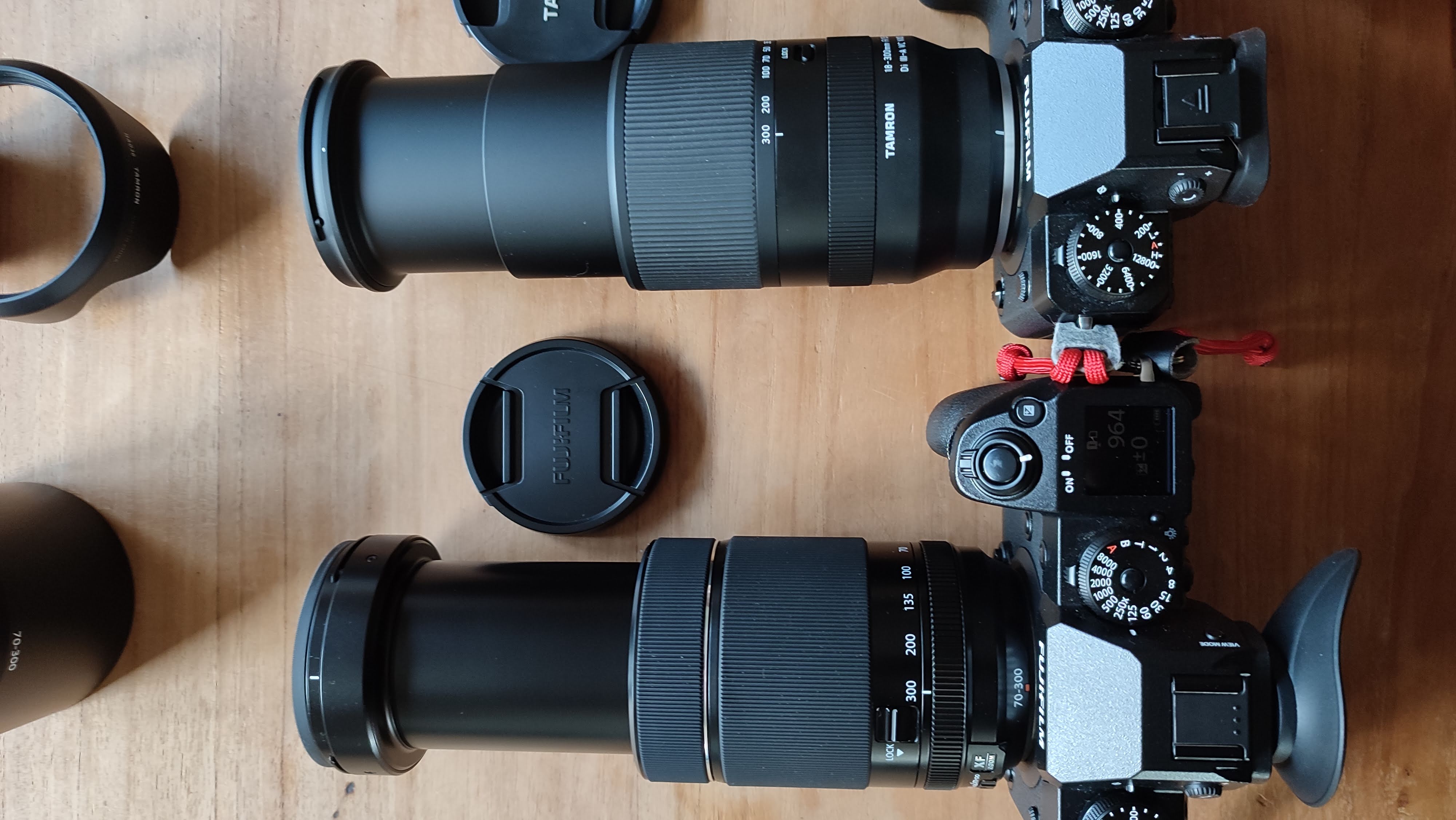
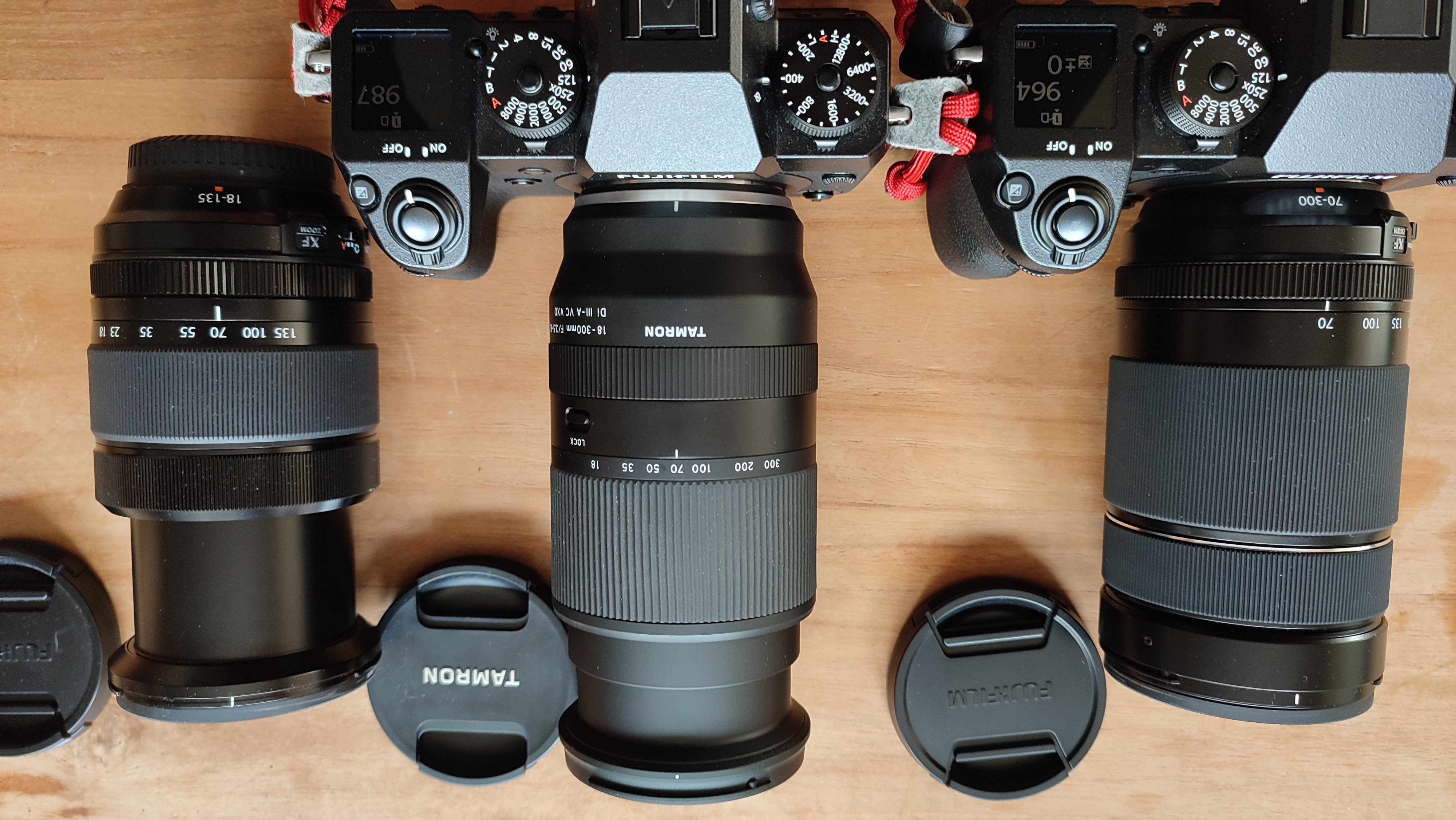
Lens test – Tamron 18-300 compared to Fuji 18-135 and 70-300:
Open the photos in the gallery, the last bit of the file name contains which lens is used and the focal setting – for example xf18135-18 – was taken with the Fujifilm XF 18-135mm set to 18mm – all pictures taken with the Fujifilm X-H1.
It looks nice and sunny outside in the pictures, but make no mistake, it was 5 degrees outside and wind gusts of 60/70 km per hour.
The camera setting was iso 400, 1/125, Pro Neg Std., and stabilization enabled – Only scaled down for web at 1980px and saved at 70%.
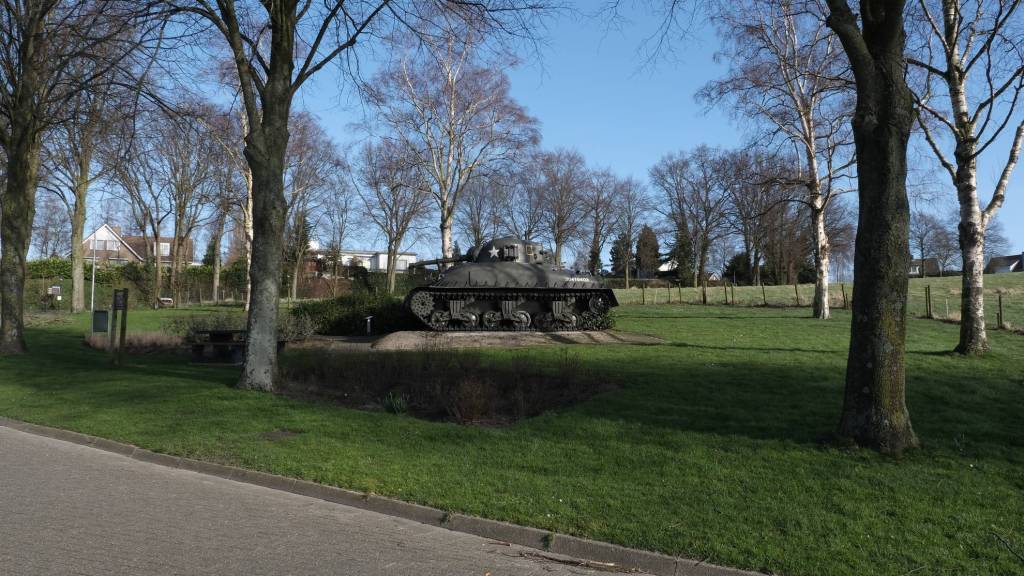
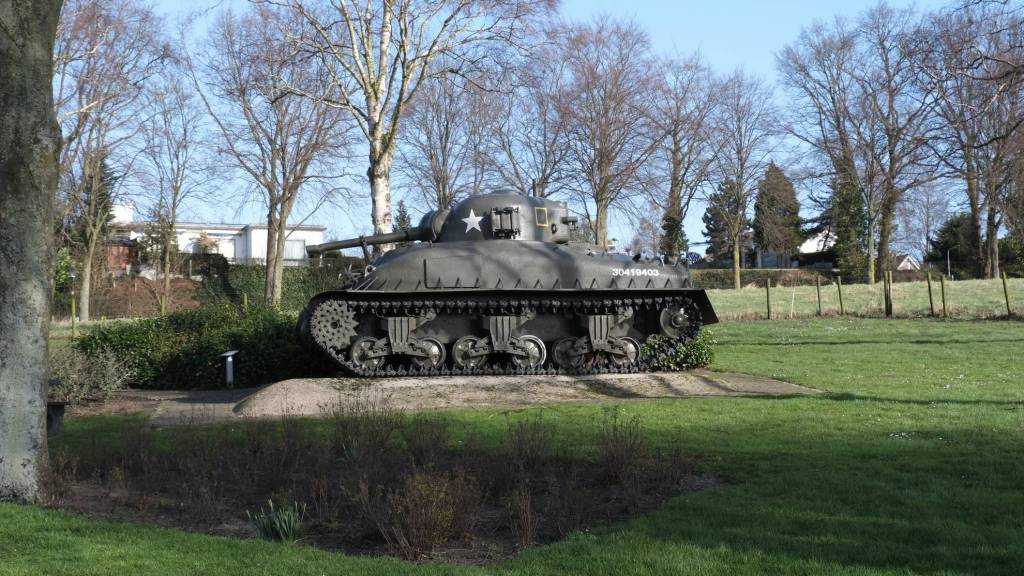
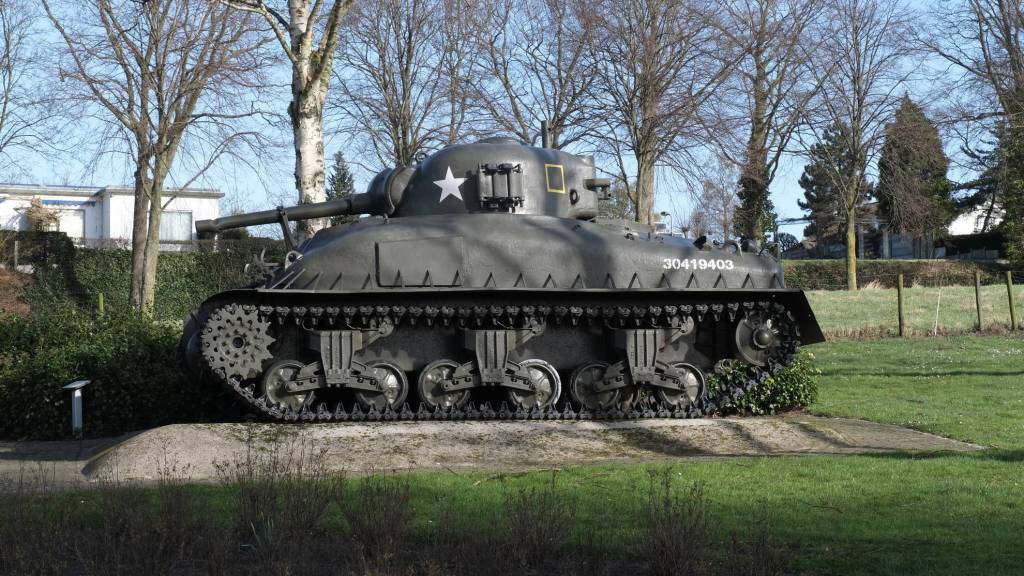
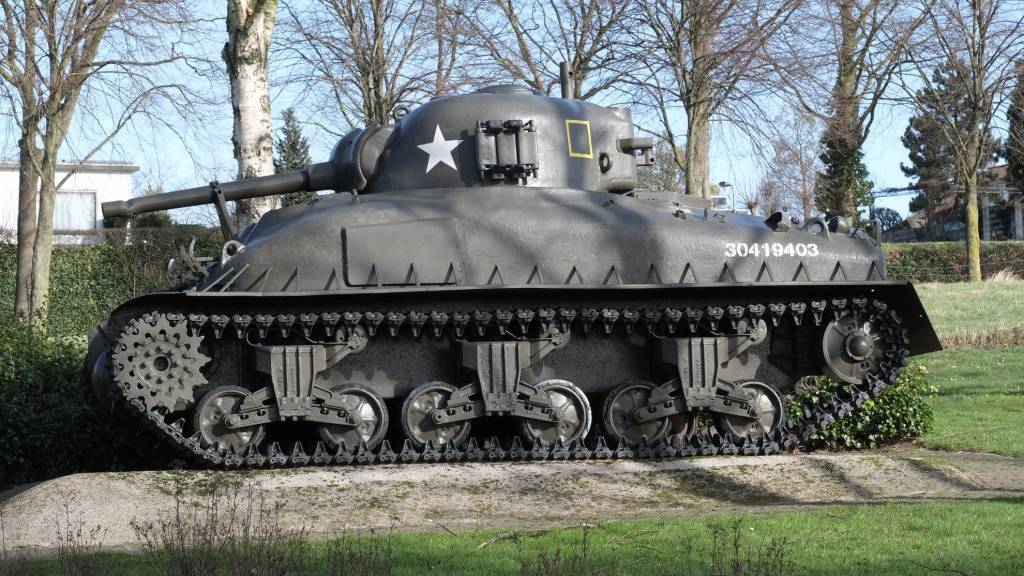
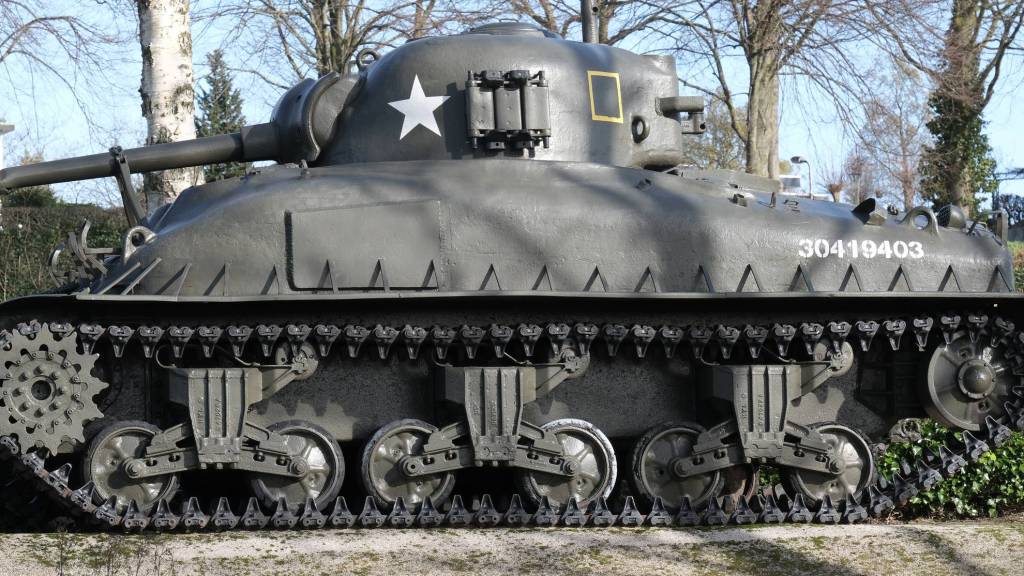
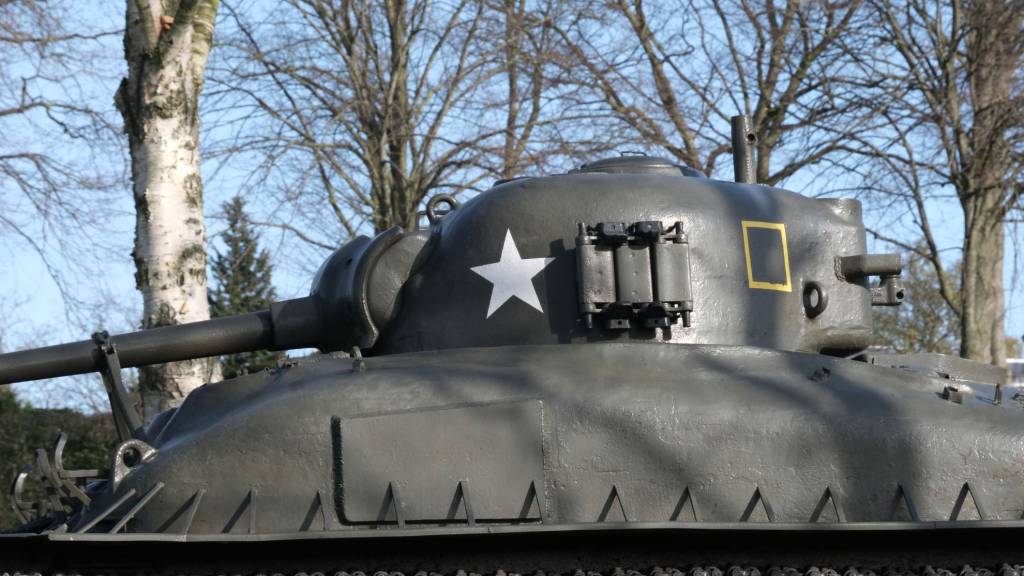
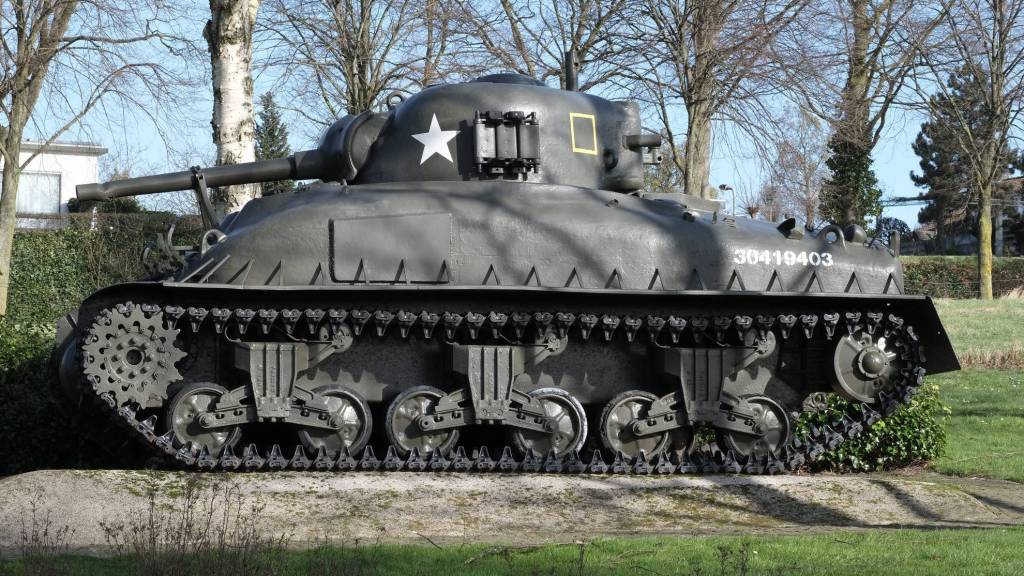
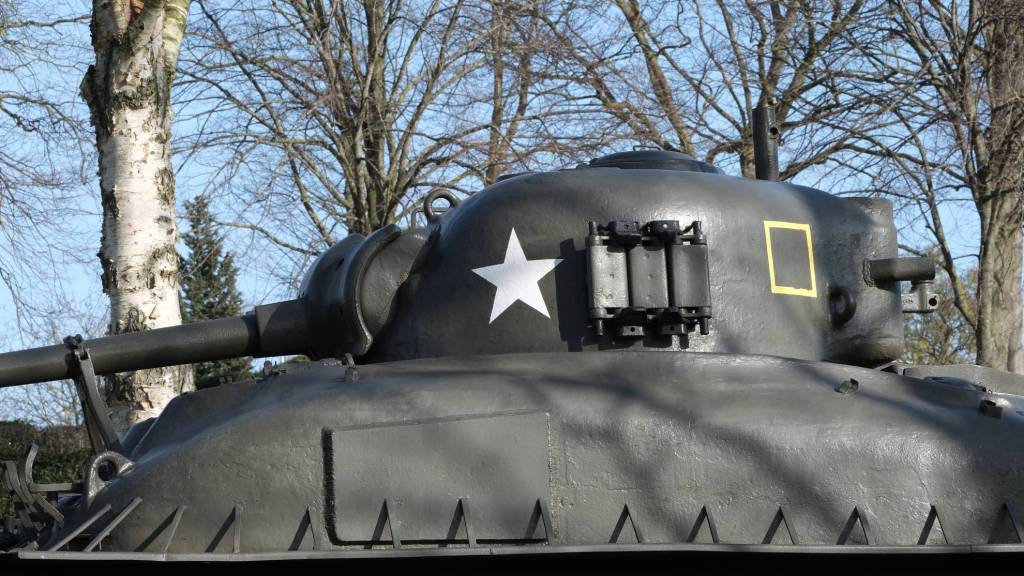
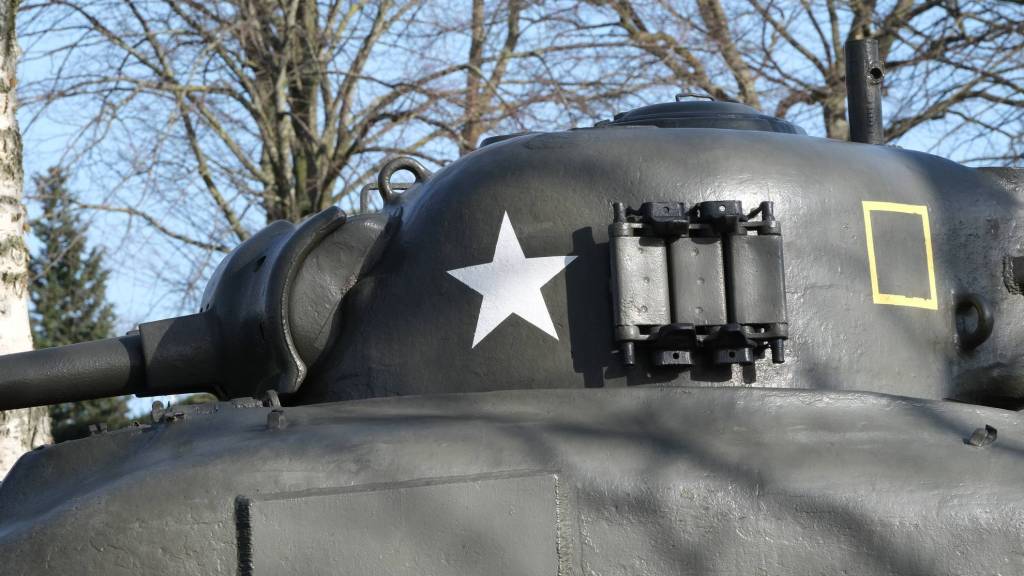
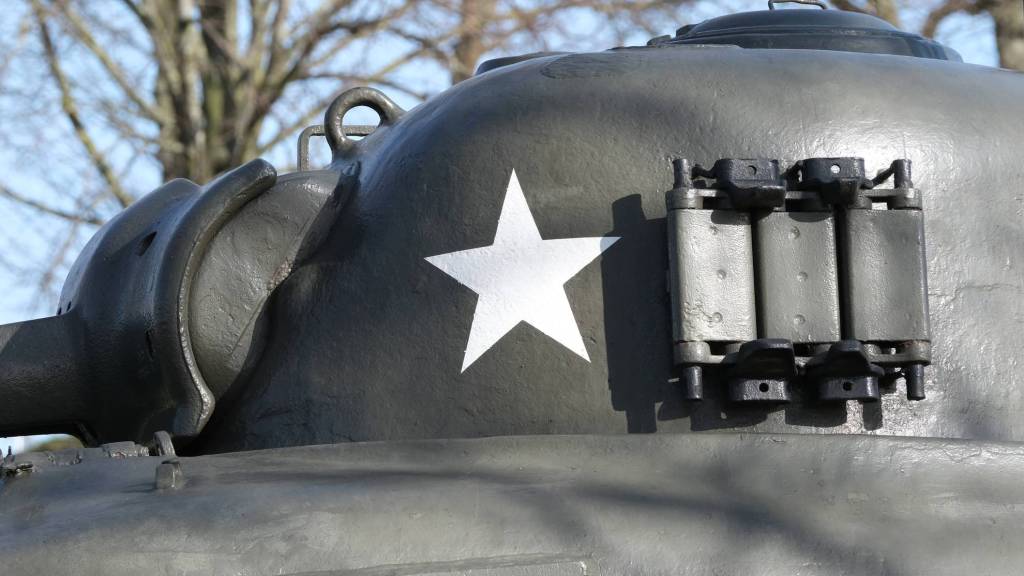

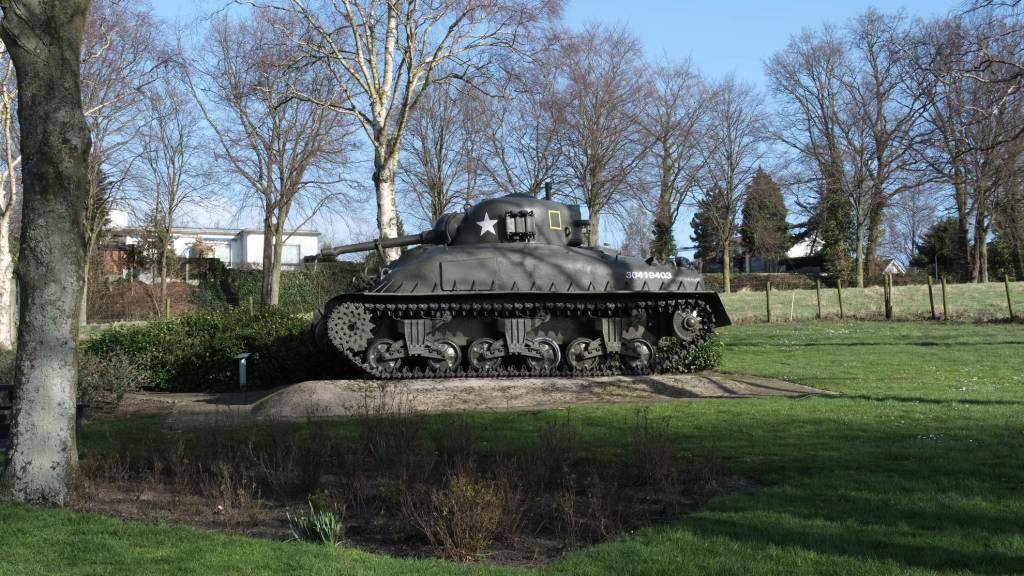
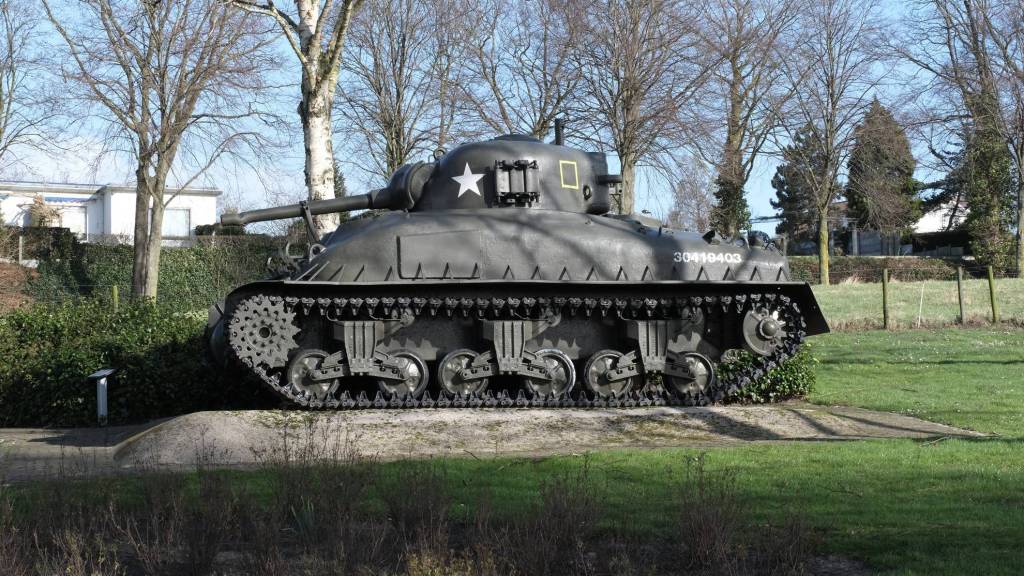
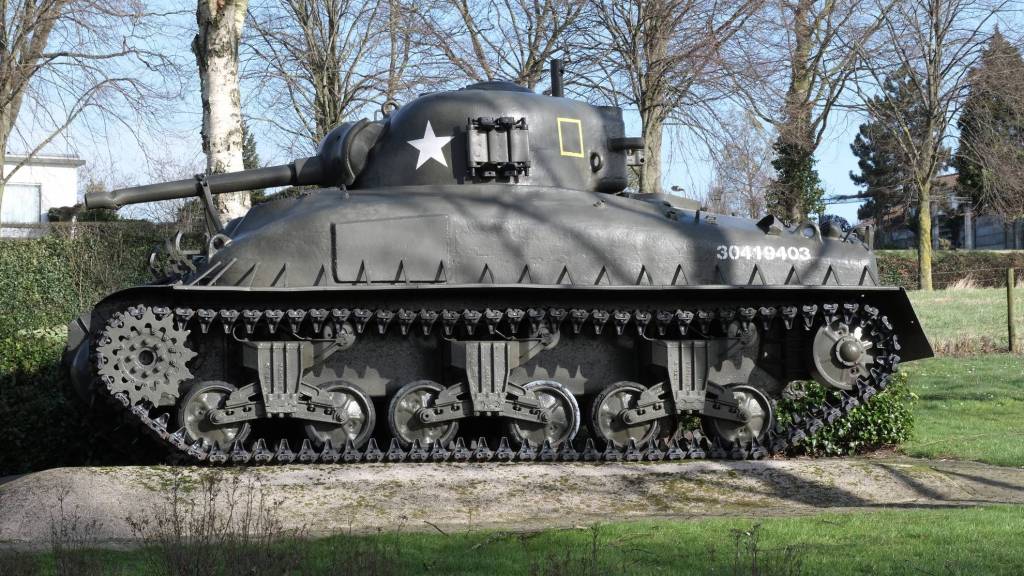
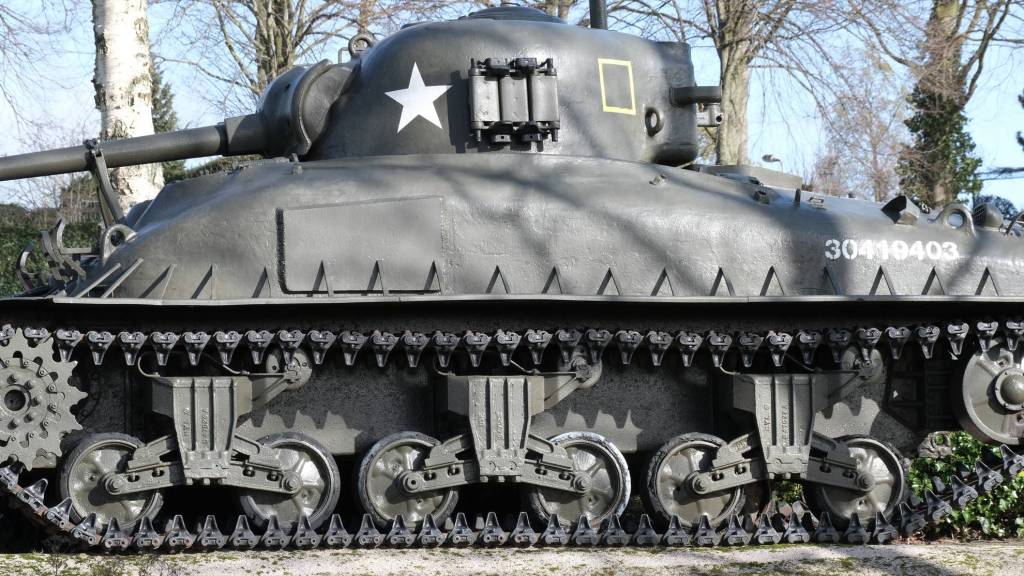
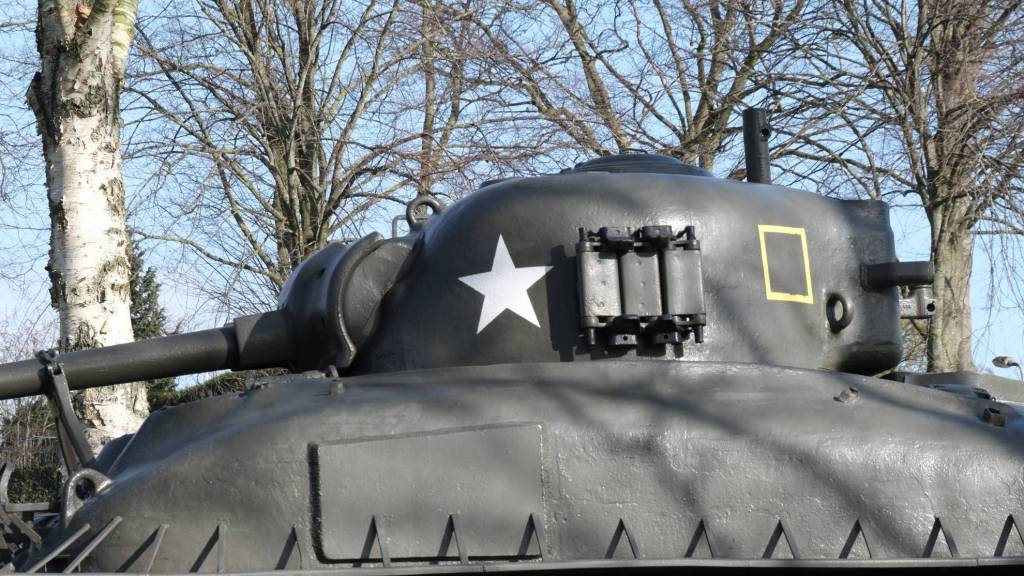
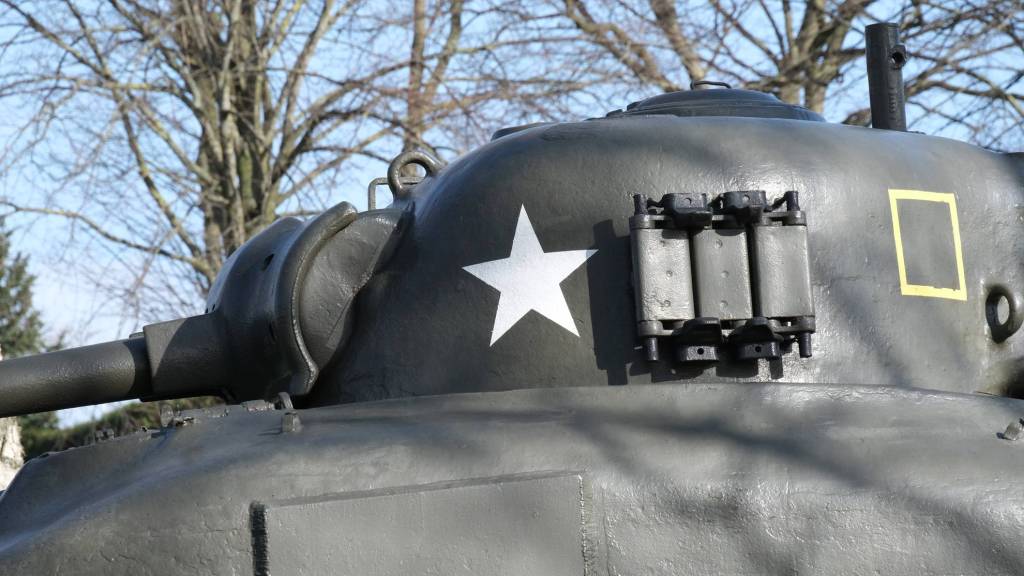
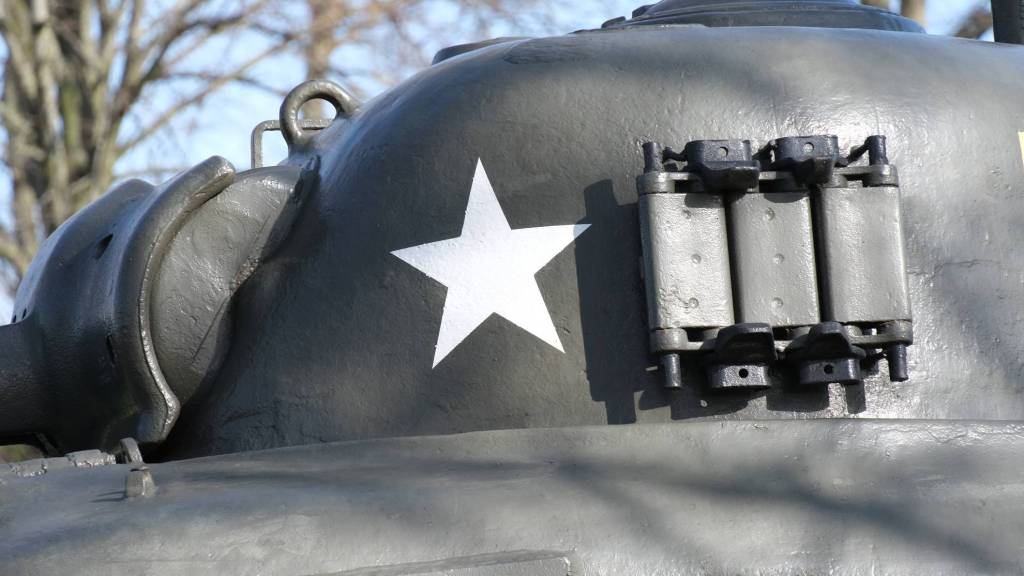
A few more photos taken with the Tamron 18-300:
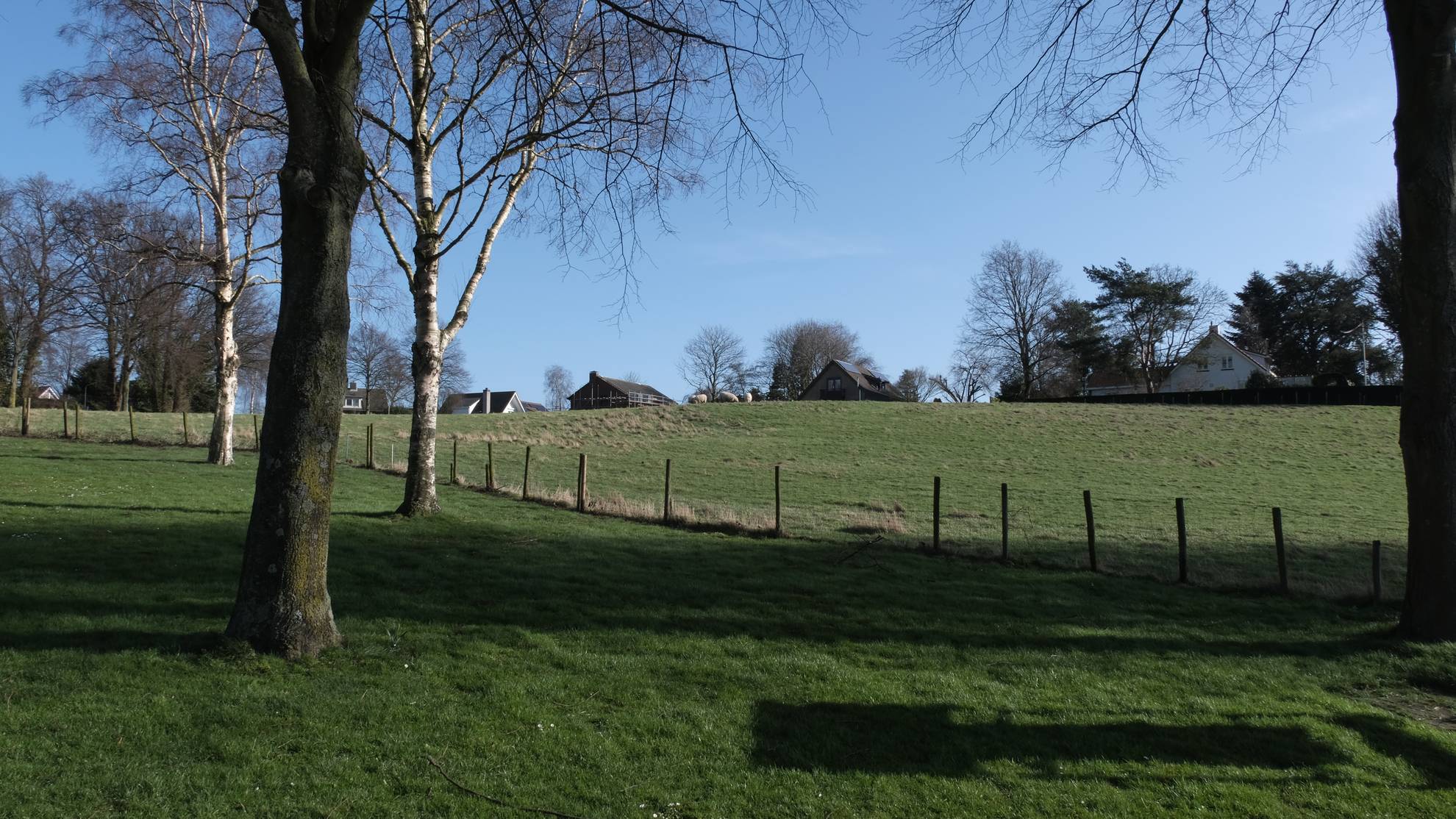
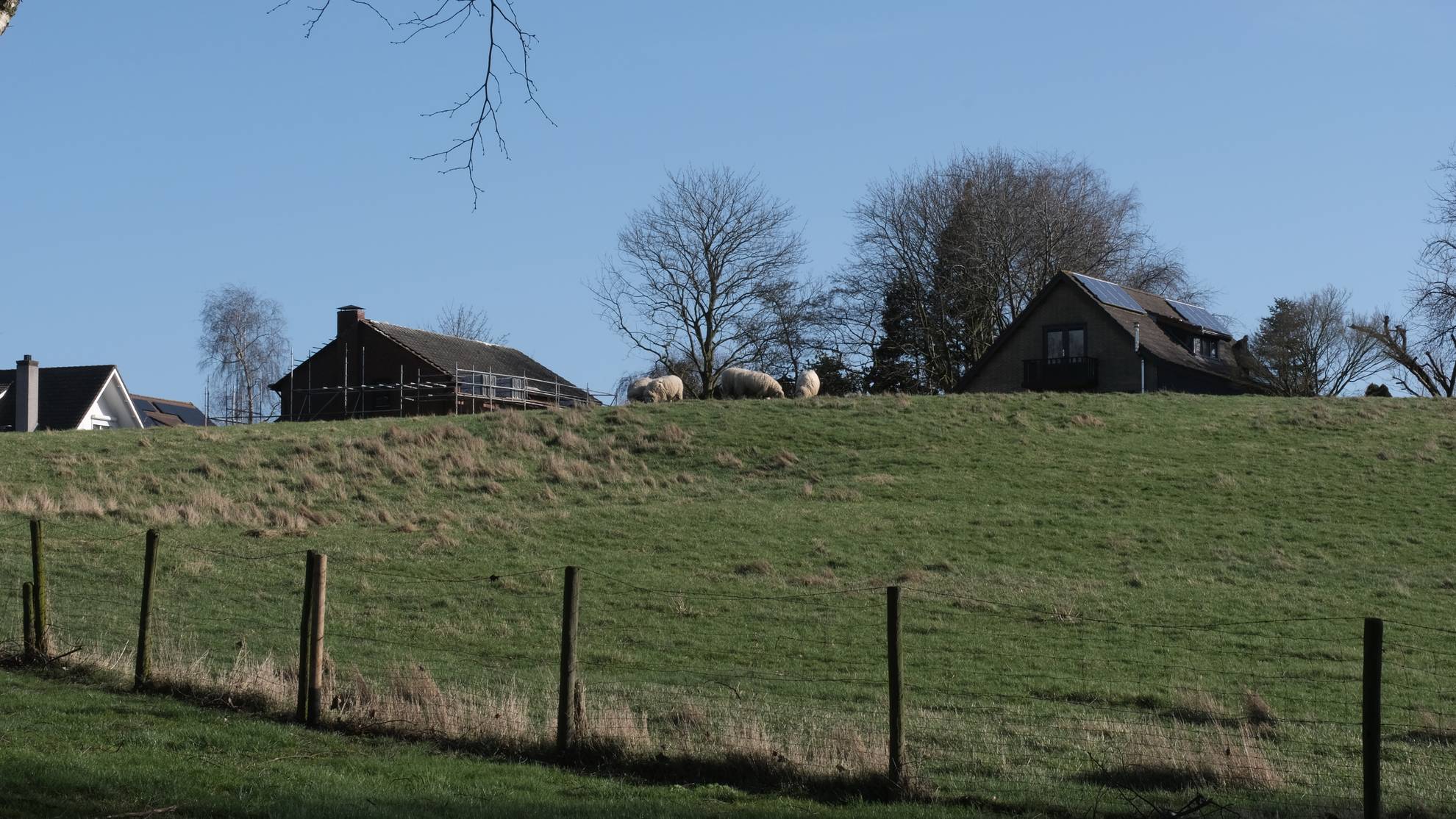
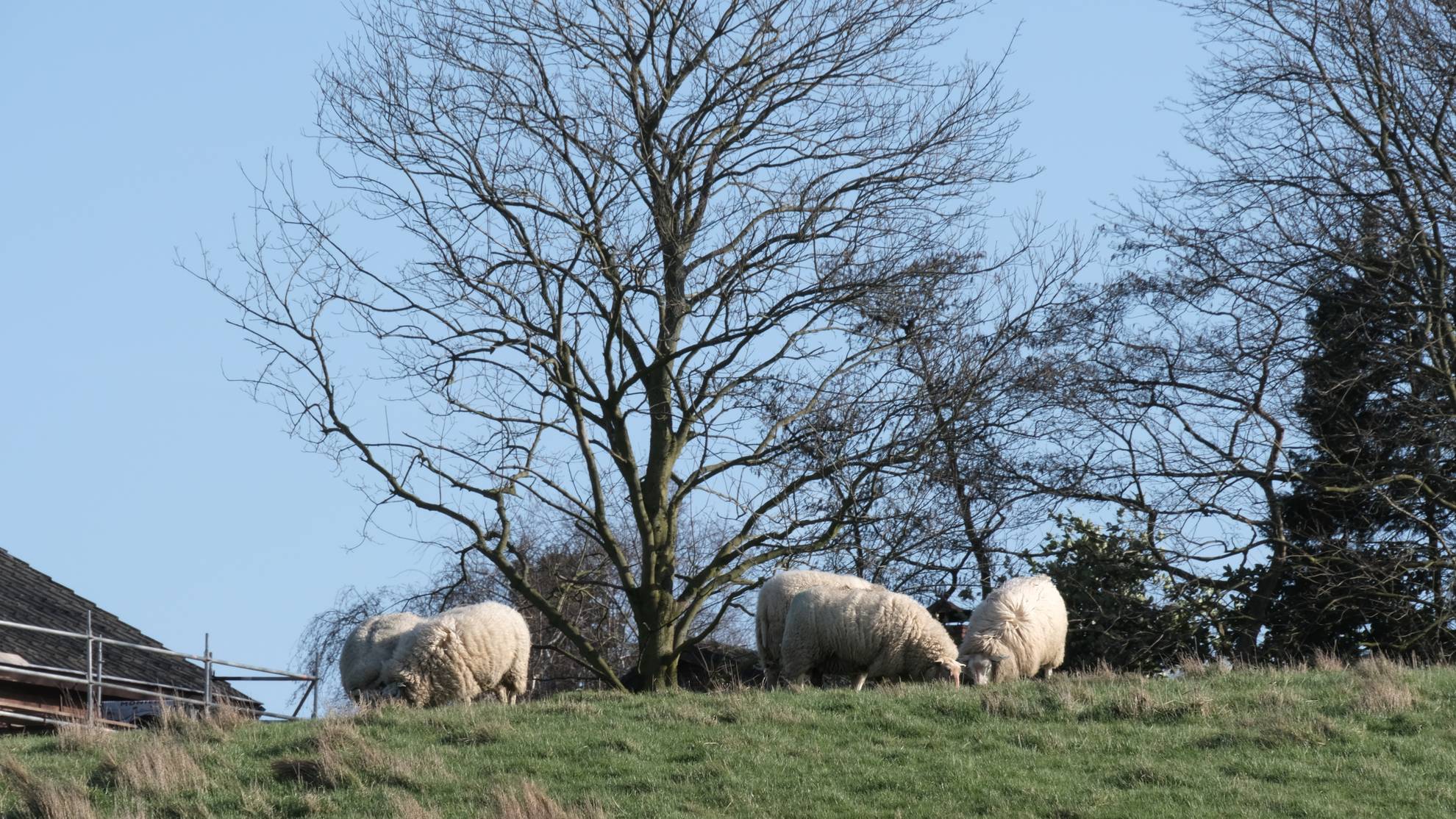
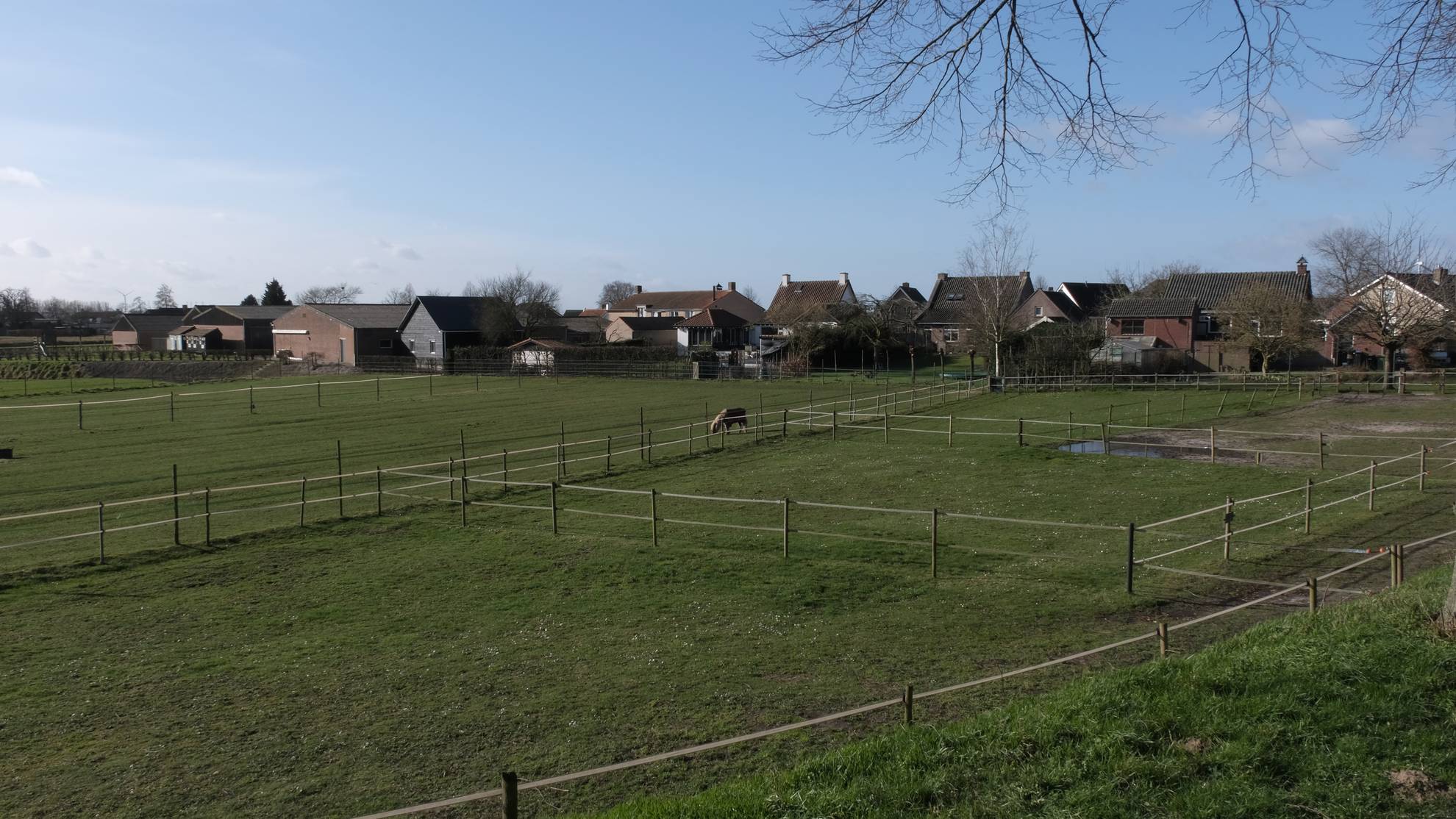
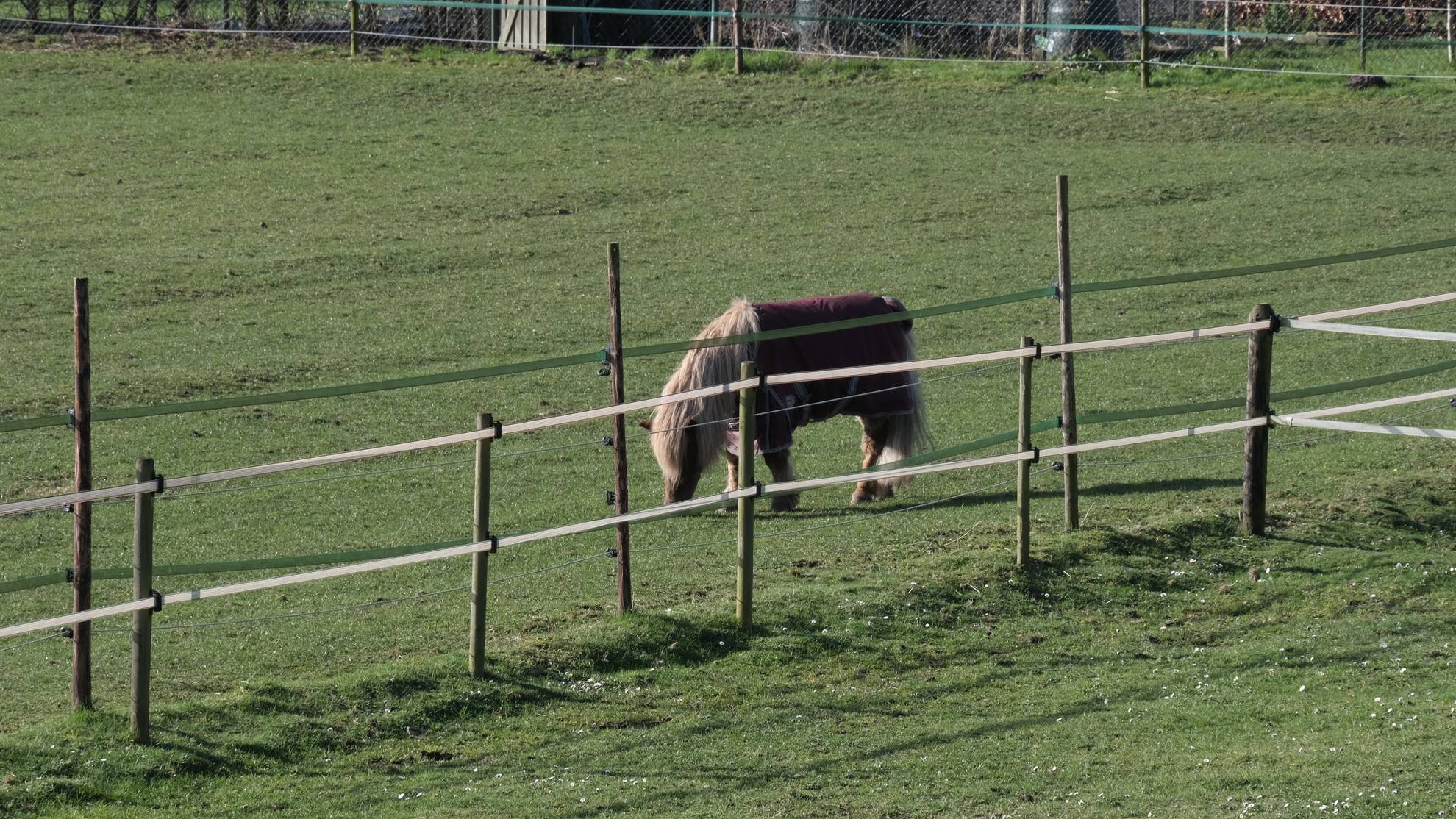
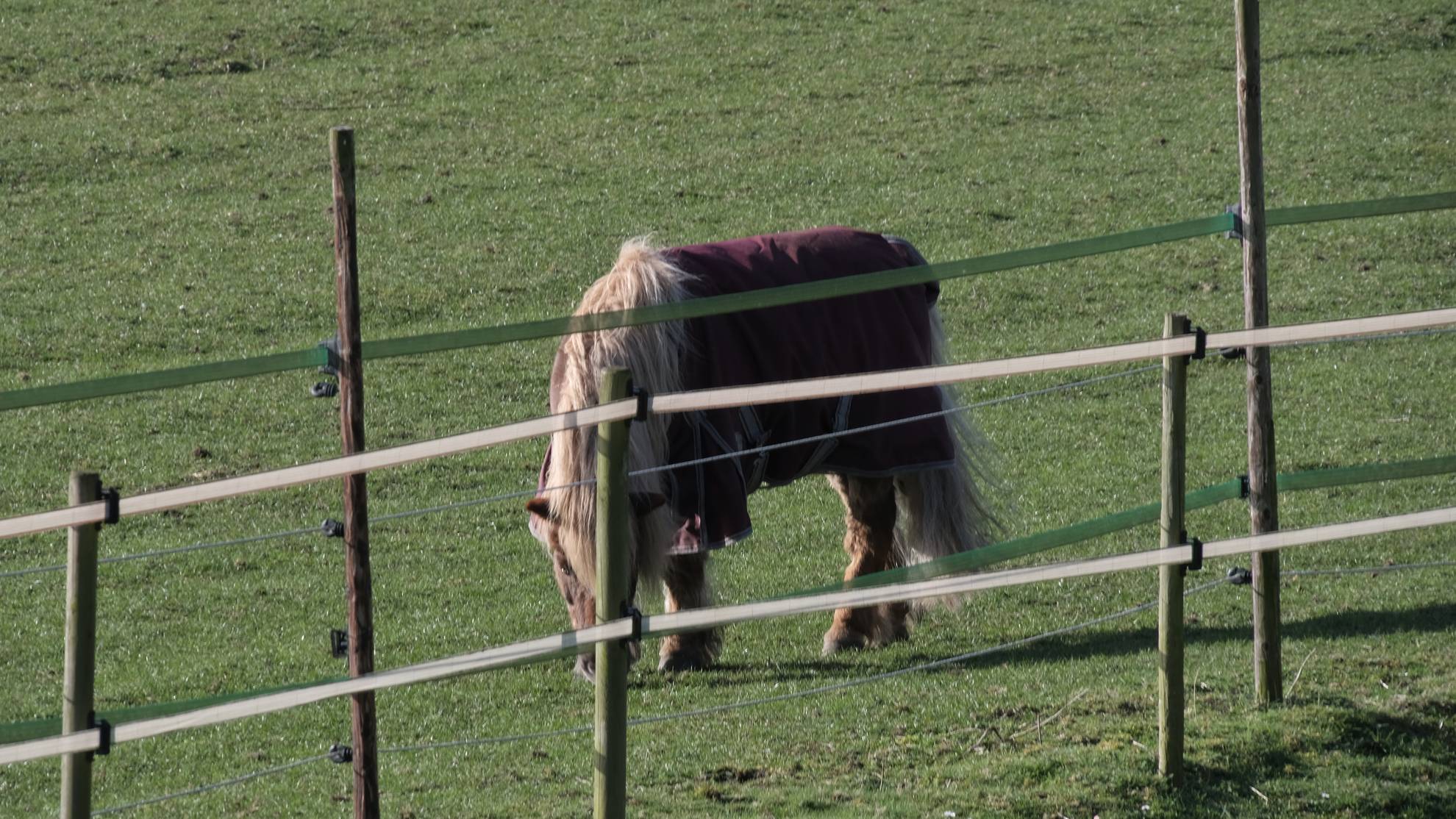
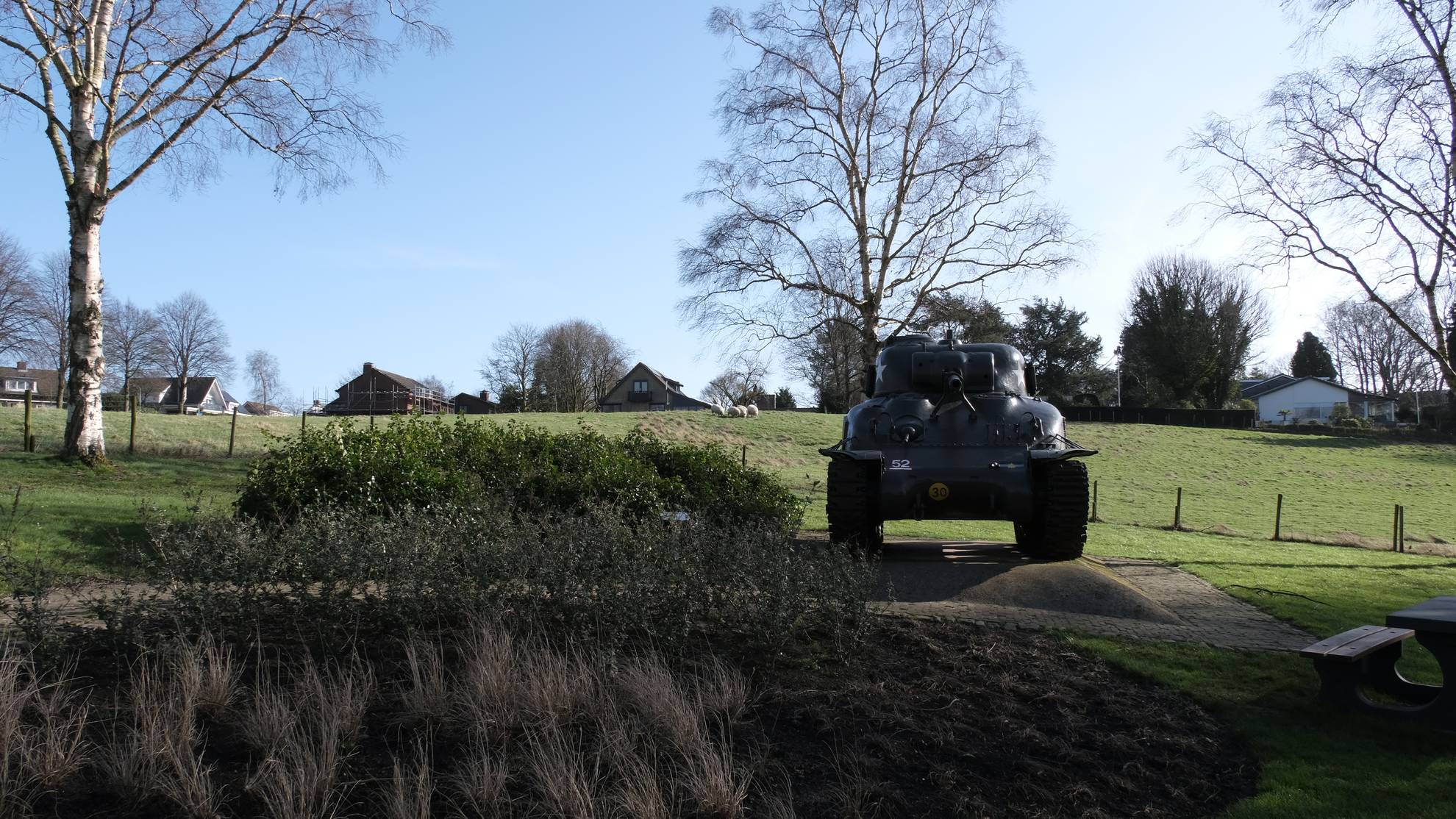
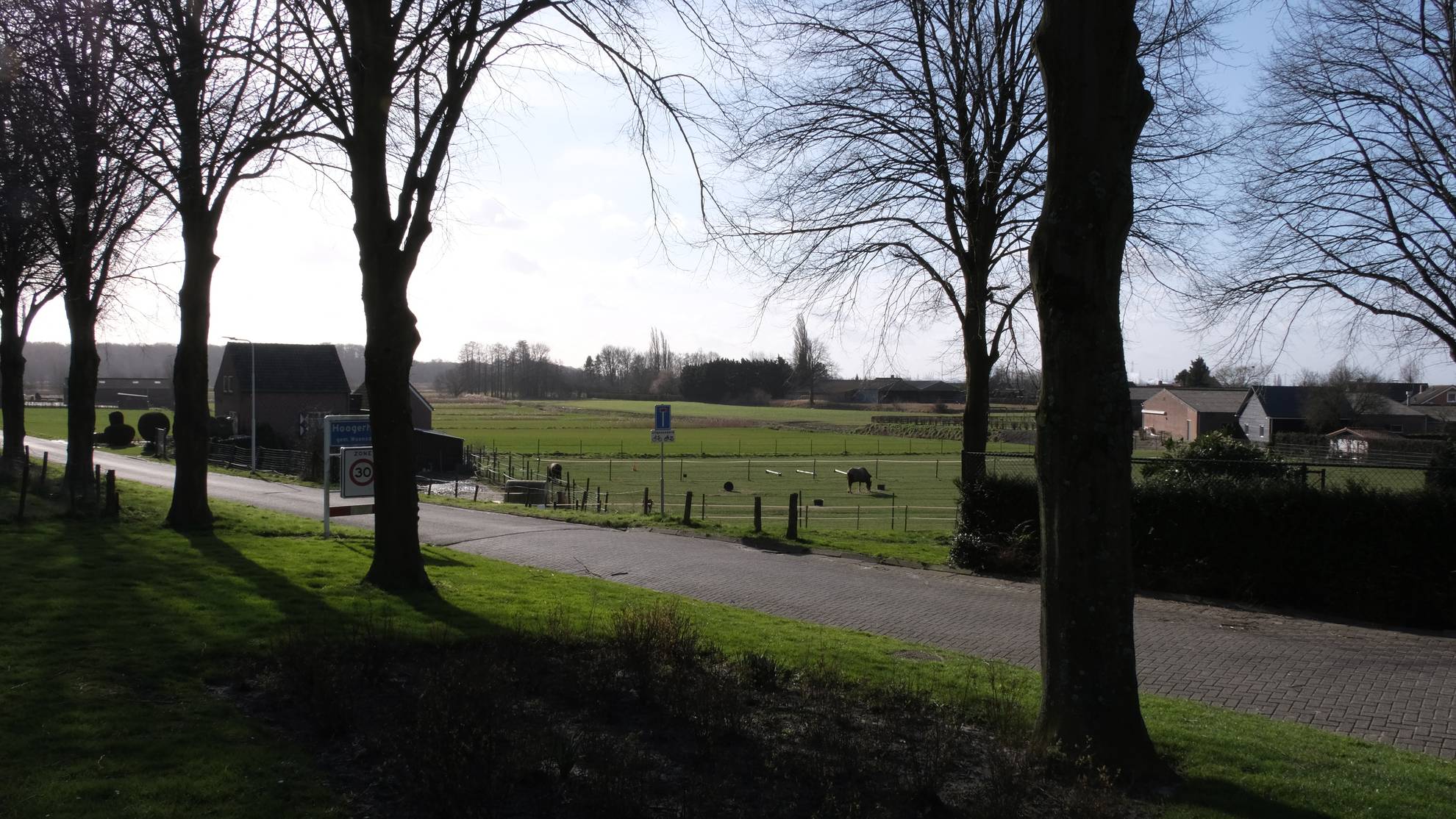
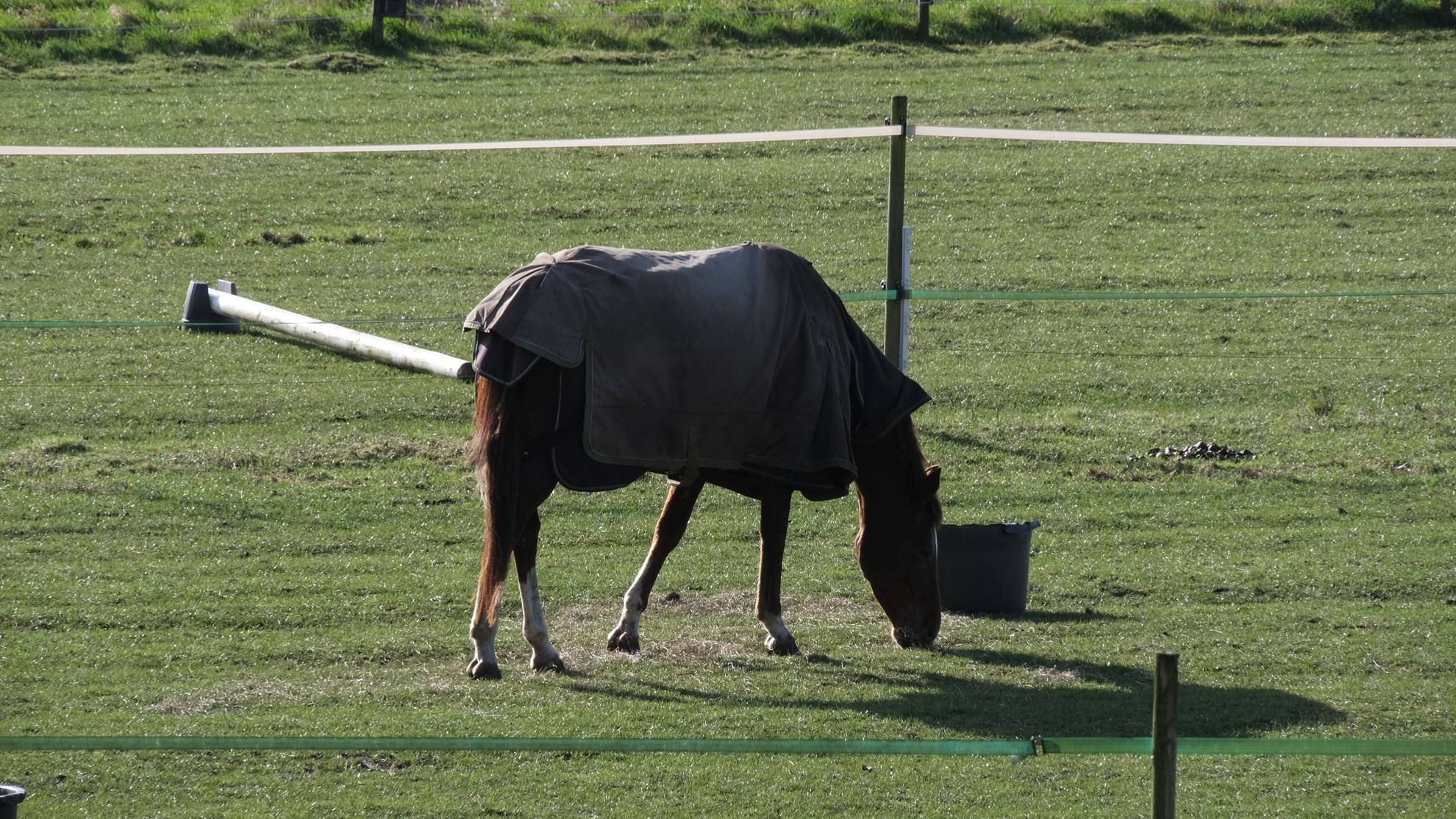

Close shots are also possible, and the results are not too bad:

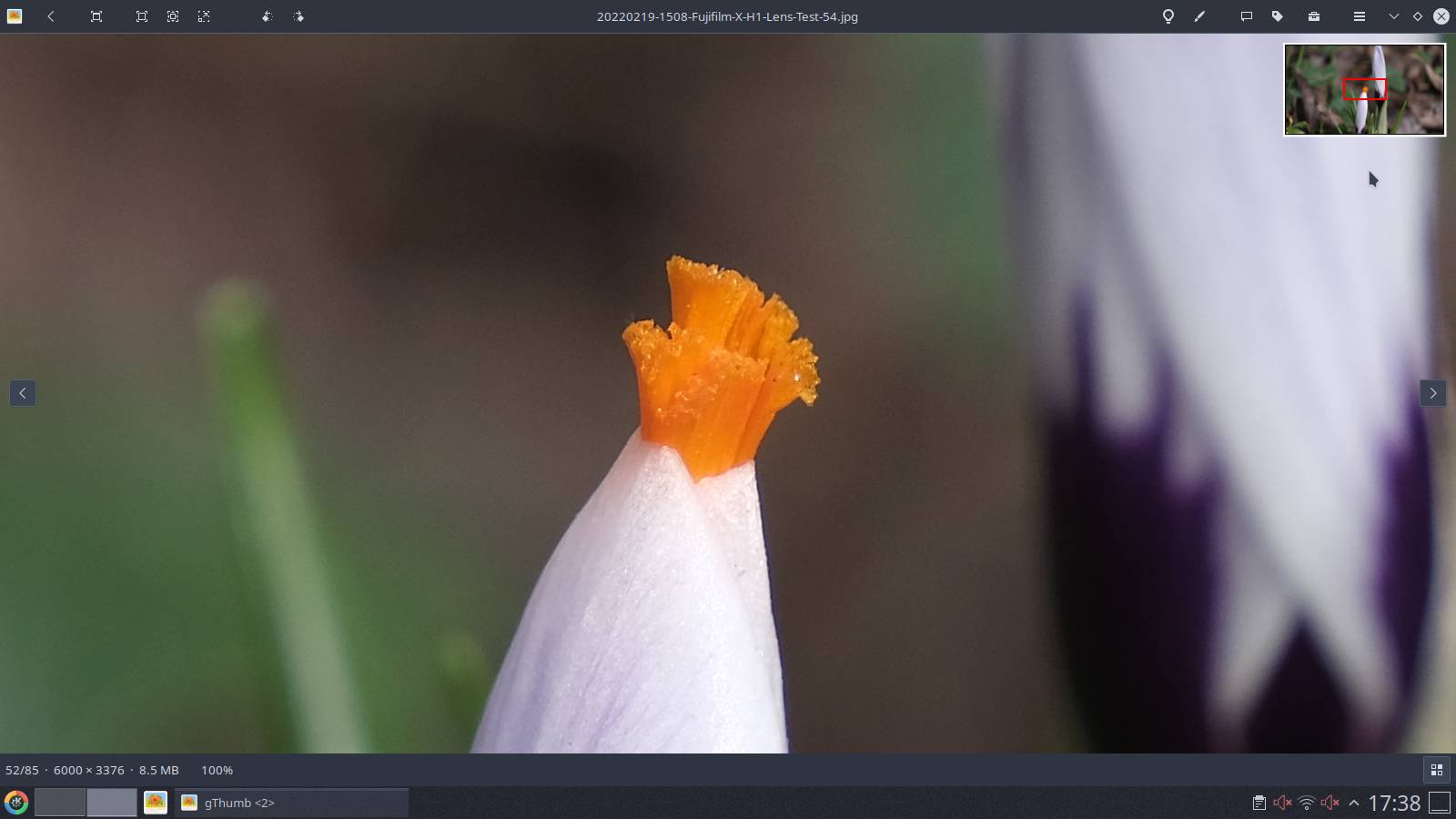
Comparison left Fuji XF 70-300mm on 300mm, and right Tamron 18-300mm on 300mm:
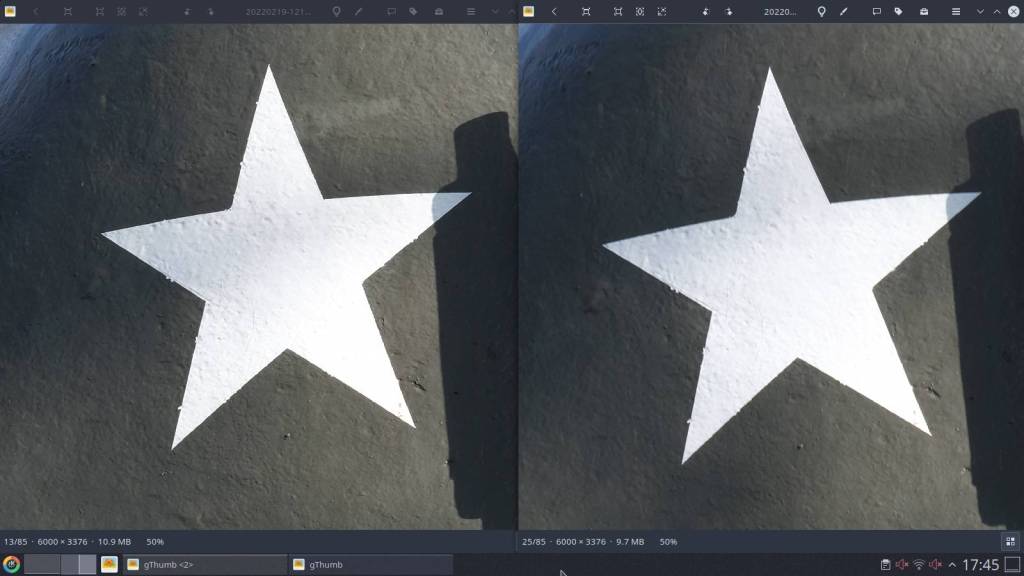
Comparison left Fuji XF 18-135 set at 135mm, right Tamron actualy set on 148mm – both enlarged 200%
Comparison left Fuji XF 18-135 set at 18mm, right Tamron set at 18mm – both enlarged 200%
My conclusion:
First off, I bought this Tamron 18-300mm with my own money , as well as the Fujifilm 18-135 and 70-300mm.
I am in no way sponsored, and take no advantage in any way in doing this review.
Regardless of how the lens feels, it is weather-sealed and replaces two Fujifilm lenses, which I think is a big advantage.
The weight is ok, and the size is good.
I took many more photos than added above, and did not find any vignetting, or certainly not noticeable, in any of the photos – taken at 18mm.
The color and character of the lens is very similar to the Fujifilm lenses.
Sometimes I see lens reviews where they talk about lens distortion, I haven’t noticed any significant distortion.
Personally, I don’t think that unless the distortion is huge, nobody would notice – unless you’re really shooting a grid or buildings, something where there are a lot of straight lines.
So also in this area the Tamron is ok.
Sharpness ? well, it’s sharp, but not as sharp as the Fujifilm lenses.
She can’t be called blurry either, I think the sharpness is acceptable under most circumstances. The lens stabilization is great, and has allowed me to shoot all the shots during a lot of wind and also at maximum focal length. The lens stabilization works together with the camera and therefore does not have a separate switch. You can activate or deactivate the stabilization in the menu of your camera. Using the Fujifilm X-H1, which also has built-in stabilization, works very well with this lens, and may have contributed to these great results.
The reason I bought this lens is because,
when you have one camera with you, and want to take pictures where
you should switch a lot between 18-135mm and 70-300mm
and honestly, 135mm is often just short, and 70mm to high to start with,
then the Tamron is the solution – I also like to shoot videos, and then a lens with this range is great.
I have two Fujifilm X-H1 cameras, so I normally don’t have this problem,
but it happens a lot that I have just one camera with me.
Out with the wife, with the grandchildren, the zoo, the park, making videos …
you probably experienced a similar circumstance – you didn’t got out specifically to shoot pictures, but there’s just that great view, a beautiful bird far away, or a sunset…
that’s when you probably only have one camera with you,
but with the wrong lens…
The Tamron changes that, just a little bigger than an 18-135,
but with a huge range – 450mm in 35mm format, next time you go out without the intention to take specific pictures far or close – put the Tamron 18-300mm on, and you can shoot anything.
Chances are you don’t have an 18-135 or 70-300 – then the Tamron is definitely an alternative.
Is it as good as claimed on commercial websites?
On advertising and by sponsored reviewers, a lens is always good – you and I know that.
That being said, it’s certainly not a bad lens, quite the contrary.
Can she replace two Fujifilm lenses with one lens?
Yes, the Tamron can certainly replace 2 or more lenses – if you can also live with the fact that it is less sharp.
However, if you are a critical person there may also be other disadvantages for you.
Is this the only lens you will ever need?
“Ever” hmm, ever is a long time but it’s possible, it’s definitely a great starter lens,
Final:
To the questions : would I buy it again if I could turn back time ? – and can I recommend this lens ? – on both questions YES. Keep in mind that it is not cheap, on the other hand, if you buy some Fuji FX lenses in this range you will lose more,
but then you do get more quality – so it’s a tough one actually.
For whom is it intended ? that can be very different.
If you are (sometimes) a one lens one camera guy then this could be the solution,
but there is a price to pay, literally and figuratively.
I hope this review was helpful to you and that you can draw the necessary conclusions from it. Marc.
Discover more from Open Source Photography
Subscribe to get the latest posts sent to your email.


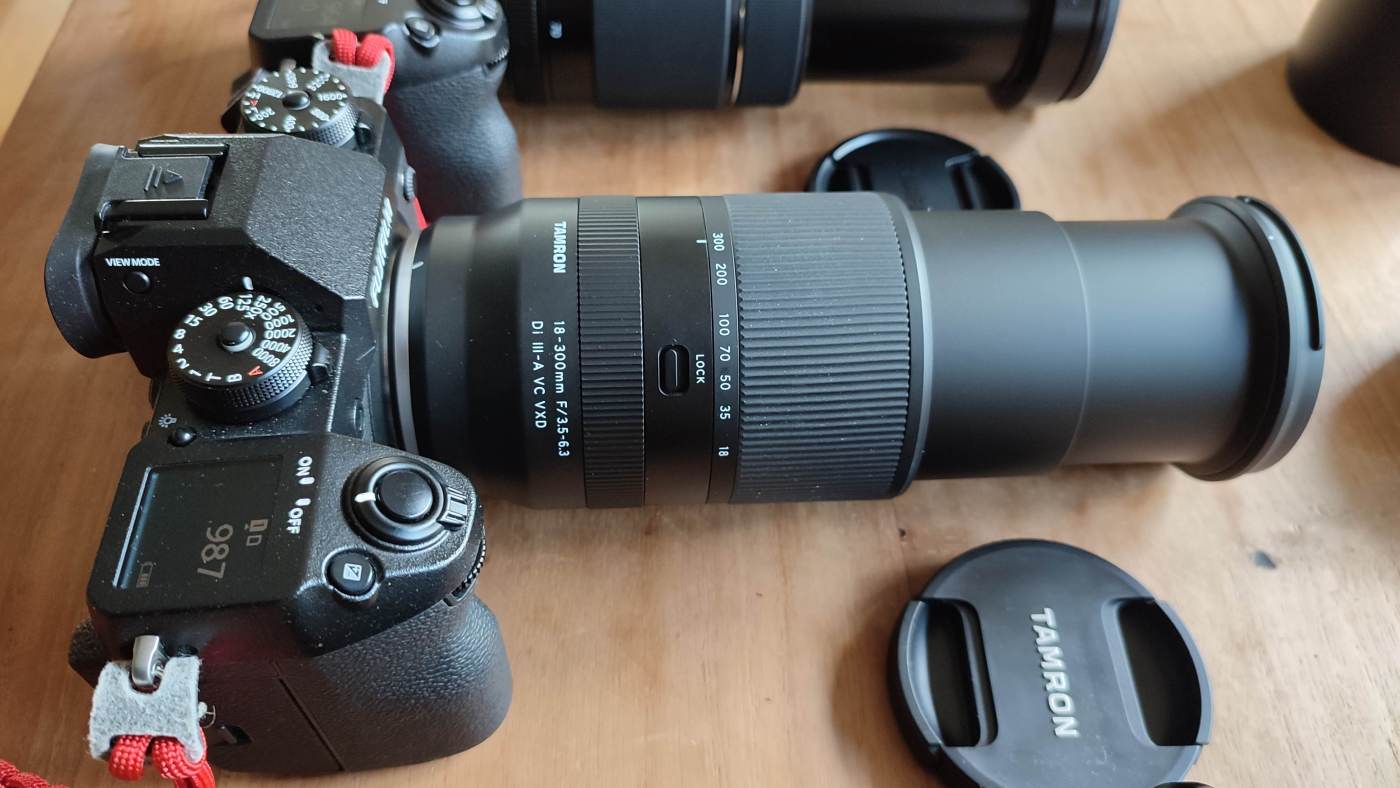
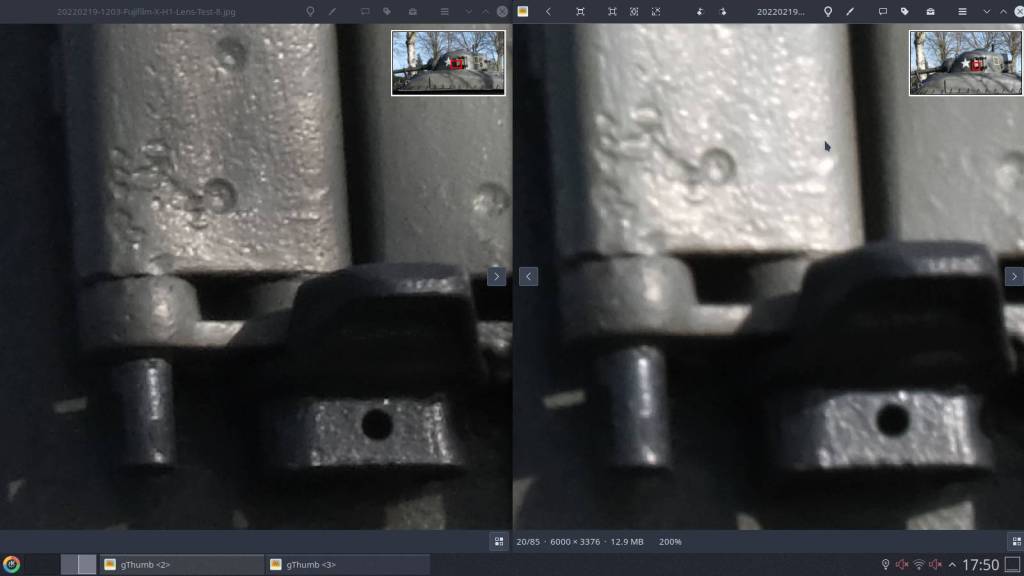
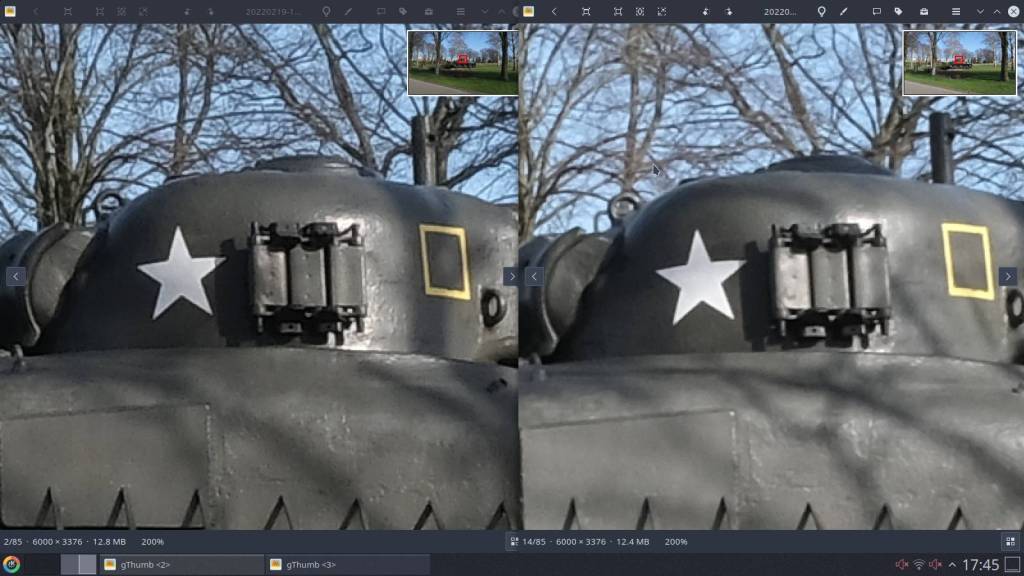

Hi Marc, thanks for writing this article. I’ve been looking for good comparisons between the XF 18-135 and Tamron 18-300. This helps a lot.
I noticed that the last couple of images don’t open up to a wider view like some of the previous images do. Is that something you could fix? I was hoping to see the sharpness in a little more detail. Thanks!
LikeLike
Hello T.
First of all thank you for visiting my humble blog.
I must also say that I no longer use Fujifilm, I switched to Olympus because it better suits my type of photography and needs.
Now as to the sharpness in detail, I can tell you that I had both the Fuji 18-135mm and the 70-300mm. I bought the Tamron 18-300mm because I didn’t want to carry around two lenses, on the one hand to avoid changing lenses, but also for the weight.
Sharpness : the Fuji’s are sharper, not much, but especially towards 18 and 300, in the middle it’s ok.
You get one lens for the price of two, and the comfort of that, but not the quality.
Everyone is different T., if sharpness down to the detail level is of great importance, then you’re better off with the Fuji’s – if you want even more sharpness in detail, switch to prime’s !
Every advantage has its disadvantage, and vice versa 🙂
I visited your website, great photos !!!
Take care,
Marc.
LikeLike
Thanks for the reply Marc!
I ended up getting the Tamron and so far I’m pretty happy with it. I used to carry two different zoom lenses to cover that range – just having it all in one feels like it should be impossible. I haven’t found sharpness to be an issue at all yet. I even did some snowboarding action shots with it. I did find auto-focus would hunt a little at the long end in action, but hand-held I don’t think I could reasonably expect better. Plus I’m still getting used to Fuji.
Thanks for taking a look at my photos. I think it’s been over a decade since I posted anything on that blog. Most of those photos would have been from an old Pentax (K-5 I think) – some may even be from an old film Pentax LX.
Thanks again!
LikeLiked by 1 person
I have been given a tamron Di2 55 to 200 lens but I can’t find a mount for my xt20 body any ideas where I could look or is the lens too old?
LikeLiked by 1 person
hey Mike !
The Tamron 55-200mm DI2 is certainly not old.
But you forgot something:
Which mount it is made for ? because this lens is made for almost all known lens mounts – Nikon, Canon, Pentax, Sony, …
The second problem is that this lens does not have a manual aperture, which is not a big problem in itself, but then you need an adapter with a ring that controls the aperture. And there are, not even so expensive.
Just look this up in Google, then you’ll know what I mean: “Pentax K/M/A/FA/DA Lenses to Fuji X Lens Mount Adapter K&F Concept M35111 Lens Adapter”
Or for Nikon : “AI G AF-S Mount Lens to Fuji FX X-Pro1 XT4 X-M1 X-A1 X-E1 Adapter K&F Concept Camera Lens Adapter Ring”
So : Lens Mount ? + Aperture Ring = solution 🙂
Have a great day Mike !
LikeLike
Dear Marc
Sorry I forgot to say it has come from a canon
LikeLike
Well Mike, In your first post you wrote if your lens wasn’t too old, it’s actually usually the other way around. An adapter is almost always available for old lenses. The brands themselves don’t make it any easier, because within a brand you still have different mounts – Canon FD, RF, RF-S, EF, EF-S and EF-M.
Your Tamron’s is most likely EF – Viltrox and other brands do have an electronic adapter (Viltrox EF-FX1) but whether it can operate the aperture of that lens remains to be seen. A regular EF adapter is no problem, for example the K&F Concept : https://www.kfconcept.com/KF06.450-manual-lens-adapter-ring-iii-generation-eos-fx.html – but as far as I know it is there is no mechanical adapter with aperture control for Canon EF.
There are adapters with a built-in aperture, but trust me, that won’t work.
My advice – sell it, and invest in another lens.
Do you want to work with manual lenses? look at Olympus OM, Pentax PK or M42 lenses, which are easy to adapt.
If you are looking for something similar to the Tamron for your Fuji, look at the Fuji XF 18-135 or the Tamron FX 18-300.
Good luck Mike !
LikeLike